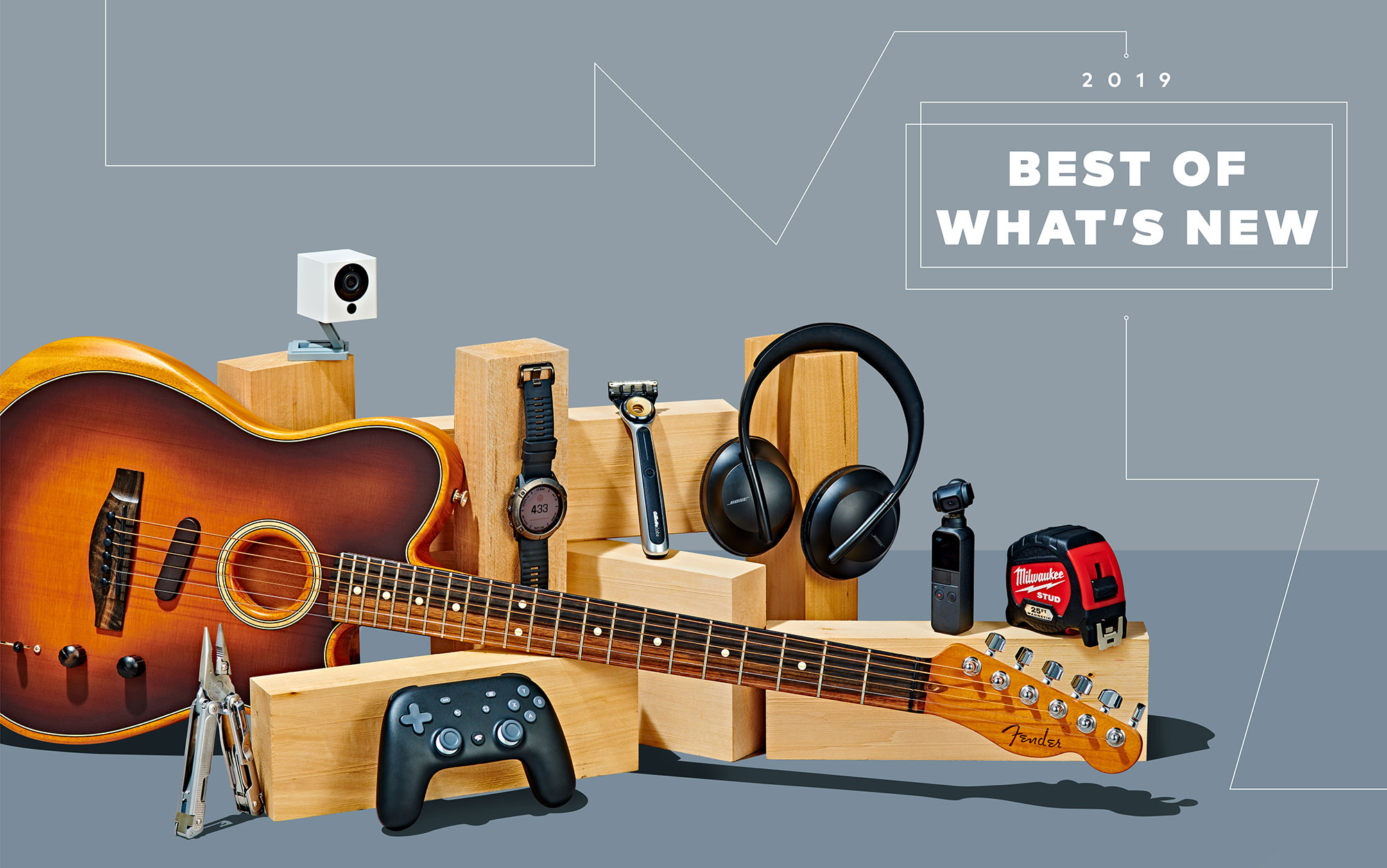

Every year, the staff of Popular Science barricades itself in a room to fight. No, this is not some nerdy fight club; it’s where we select our Innovation of the Year, the breakthrough that we agree is the most important from the previous 12 months. This year, that honor goes to the first one-dose drug to treat a long-neglected problem: postpartum depression.
It takes a lot for that singular product to rise above the rest. The 99 others on our annual Best of What’s New list represent the greatest steps across the universe of science and technology. This year saw the introduction of cars that can talk to other cars, a next-generation wireless network fast enough to replace cable-bound broadband, and a “meat” burger that could convince even the most bloodthirsty of omnivores to ditch beef. We even added an entirely new category for 2019: personal care, which dives deep into the innovations we look to when we need to attend to ourselves.
We take every one of the 100 awards we dole out seriously. That final debate follows hundreds of smaller discussions in meeting rooms, Slack chats, and hallways throughout the year. Dig in, there’s some great stuff in here. Some might even call it “the best.” We sure think so.
Health

Doctors and researchers spend hours attempting to understand, troubleshoot, and treat maladies. Some diseases are harder to dissect and design medications for, while others are ignored for years. This year’s newly approved drugs, treatments, and health gadgets shine a light on a few of these oft-neglected conditions and bring renewed vigor to more-mundane ones. These innovations include the first-ever drug designed specifically to treat a type of depression common in new mothers, a far better form of toothpaste, and a gadget that makes checking and controlling your blood pressure easier than ever. They also highlight our ever-improving understanding of how the human body works.
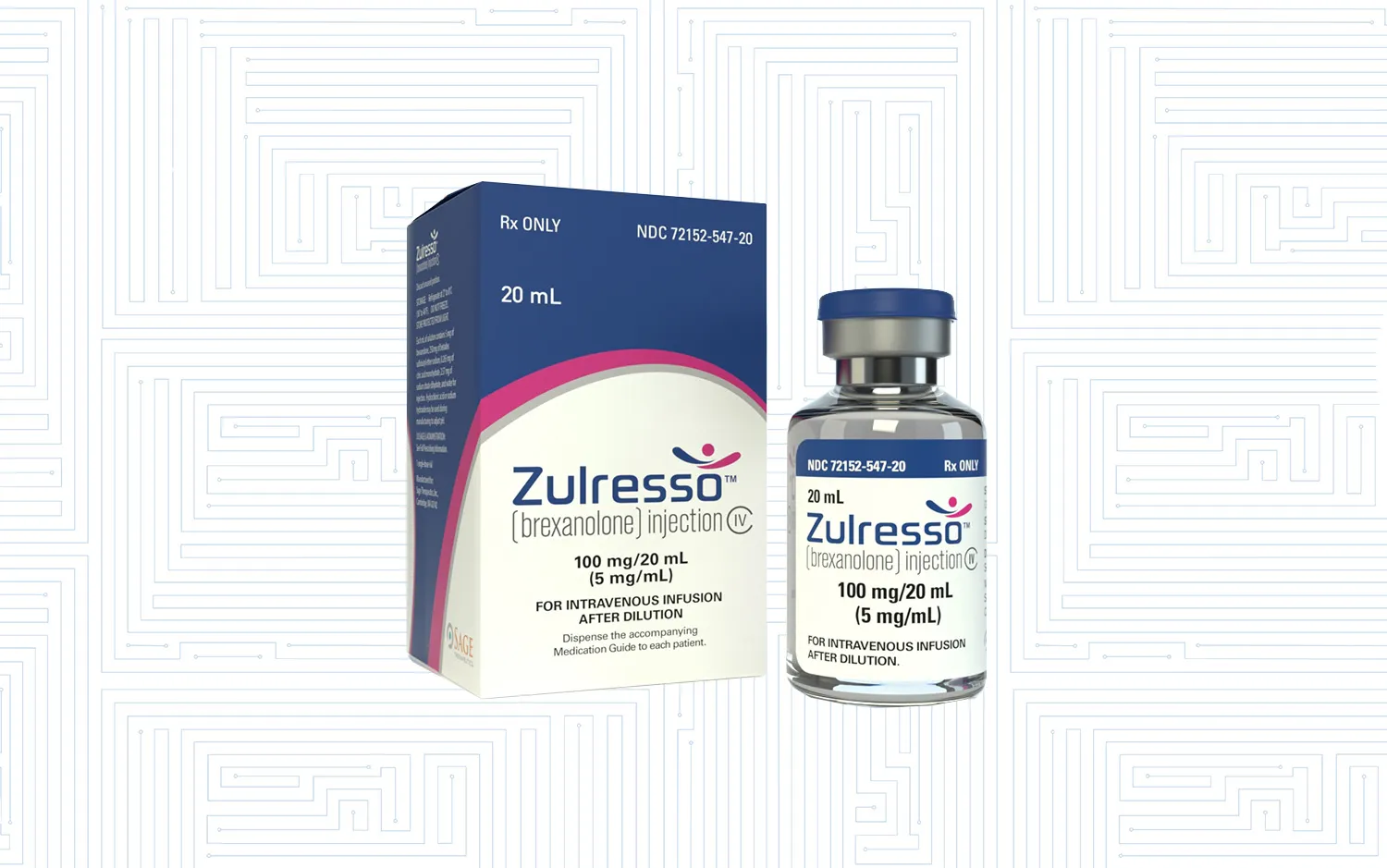
Within days of giving birth, a woman’s estrogen and progesterone levels quickly drop, leading to chemical changes in the brain that might give rise to shifts in mood. In fact, as many as three in four mothers experience symptoms of depression soon after childbirth. But for one in nine mothers, those symptoms result in a more serious, longer-lasting, and potentially life-threatening condition known as postpartum depression. The disorder, which manifests as a significant change in mood within hours to weeks of giving birth, is the most common complication of pregnancy. Currently, the depression drugs used to treat it take weeks to months to kick in—time that new mothers (and their infants) can’t afford. Zulresso is the first FDA-approved medication designed to tackle postpartum depression, and it does so at speed. The drug is a synthetic form of allopregnanolone, a hormone that dampens neural activity and eases depression symptoms when estrogen and progesterone levels dip. In double-blind control studies run by the creators at Sage Therapeutics, Zulresso worked within 60 hours. Right now, the drug is administered via a 60-hour intravenous infusion (common among new medicines), but alternative treatments, including a pill form, are currently in clinical trials.

Getting kids to the doctor for their scheduled vaccinations can be a figurative and literal pain. But missed or delayed shots might put children—and their friends and classmates—at risk of contracting dangerous infectious diseases. Vaxelis by pharma giants Sanofi and Merck is the first shot that protects against six different transmissible diseases: Haemophilus influenzae type b, poliovirus, hepatitis B, diphtheria, tetanus, and pertussis. It’s given in three doses when infants are 2, 4, and 6 months old (kids up to 4 years old can still get it). Compared to current regimens, it demands up to four fewer injections, letting pediatricians give more attention to other childhood needs.

About 75 million American adults have high blood pressure, also called hypertension, according to the Centers for Disease Control. But only about half that group have the condition under control, even though it puts them at risk of heart attacks, strokes, and kidney disease. Constant vigilance can help: With HeartGuide, the first FDA-approved smartwatch, people can track their pressure at any time. The device features an inflatable strap that functions just like a blood pressure cuff. It registers readings in 30 seconds, and saves the last 100 stats so users can see trends and share them with their doctors.

Vacations are one of the finer pleasures in life, but hitting the road often comes with risks. Traveler’s diarrhea, though common and inconvenient, can lead to more-serious conditions if not treated right away. To do so, doctors often turn to broad-spectrum antibiotics, which, when used inappropriately, can lead to resistance. Aemcolo is an antibiotic pill that is now approved in the US to counter the most common noninvasive strains of E. coli, which are the most frequent causes of traveler’s diarrhea. It targets the colon rather than the bloodstream to keep resistance down.

Menstrual bleeding that’s heavy or lasts for more than a week can lead to iron-deficiency anemia, a potentially dangerous condition. Usually, methods to treat it include surgical procedures performed under general anesthesia, but Channel Medsystems offers a new option that skips the scalpel. The Cerene Cryotherapy Device freezes areas of the uterine lining to significantly reduce bleeding during future periods. The procedure is just as effective as current methods and can be performed safely in a gynecologist’s office without anesthesia.

Since CRISPR—the easy-to-use gene-editing tool—first blasted onto the biotech scene, experts have been employing it in research to attempt to treat mutation-based diseases. In July 2019, a team edited the DNA of an American woman with sickle cell anemia—a first. Individuals with sickle cell lack the protein necessary to produce healthy red blood cells, which makes it hard for oxygen to flow through the body. Doctors first removed stem cells from the woman’s bone marrow. Then, they genetically modified them using CRISPR to make them produce a protein that makes healthy red blood cells but whose production is typically shut down shortly after birth. The procedure was successful, but researchers need time—at least two years—to know how it will hold up in the long run.
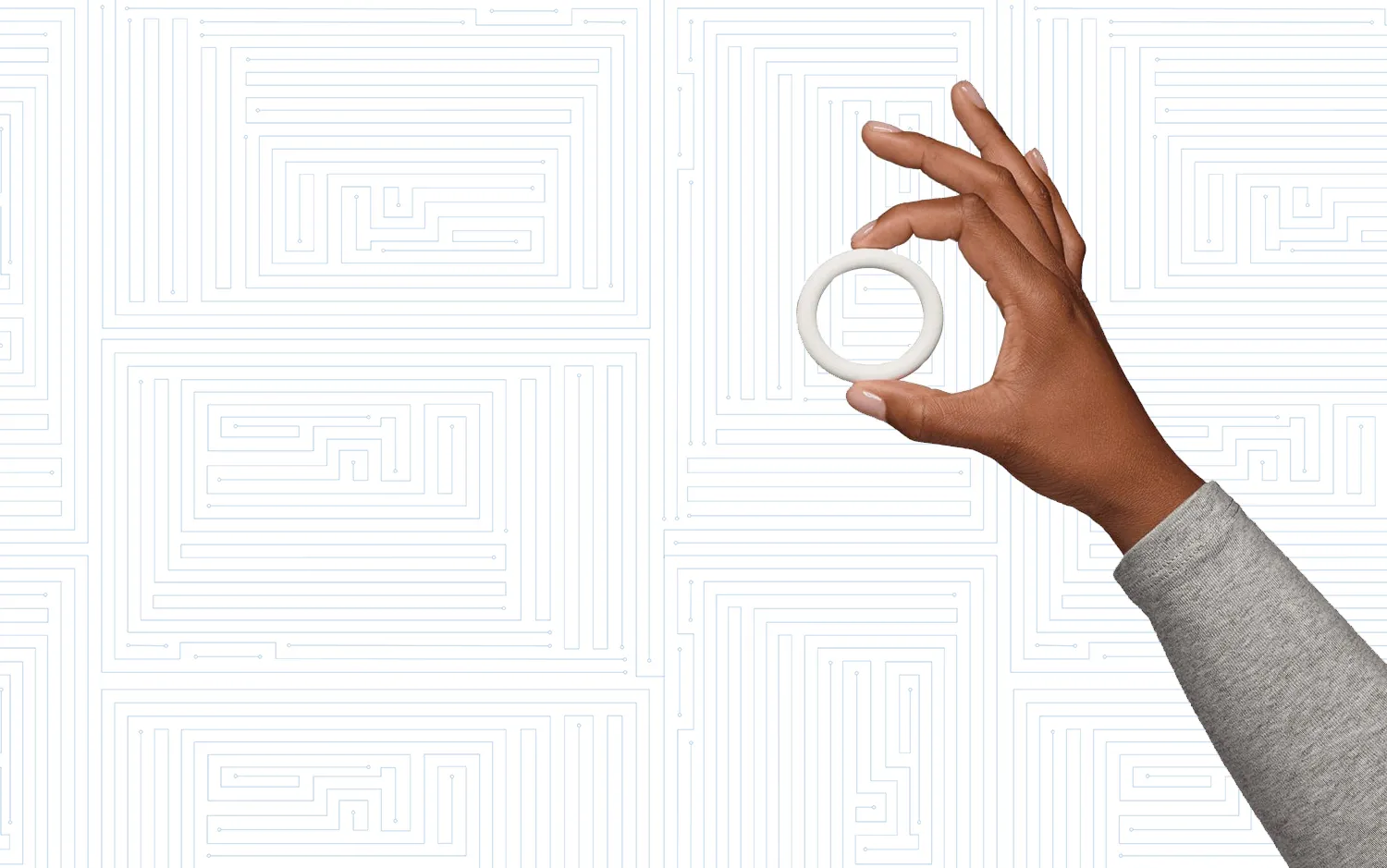
Birth control pills are incredibly effective at regulating hormones and preventing pregnancy—but they can also be a hassle. The daily synthetic hormones require repeated trips to the pharmacy and a tight regimen; and other forms of birth control, like IUDs or implants, often entail long, multi-year commitments. Annovera is the first year-long reusable implant that women can remove and reinsert on their own and when they chose. It’s an about 2-inch-wide vaginal ring that releases synthetic forms of estrogen (which suppresses ovulation) and progesterone. The device remains in place during sex and lasts for a full year, providing more autonomy over when and how users choose to utilize it.

Dentists are right: Fluoride is great for your teeth. It strengthens and remineralizes enamel, which prevents cavities and even reverses early tooth decay. Currently, most toothpastes come with a fluoride formulated with sodium. Colgate’s Total SF contains stannous fluoride, a far more potent version of substance, which in addition to strengthening enamel, acts as an antimicrobial against the bacteria that lead to bad breath, and protects teeth and gums from tartar buildup, gingivitis, and sensitivity. Until now, researchers have been unable to stabilize stannous fluoride without making the product stain teeth yellow and dark brown. Total SF uses a unique system of inactive zinc phosphate to handle the tricky element. This ensures your pearly whites stay both cavity-free and bright.

For the one in five people in the US whose depression defies all treatments, a new medication is here. This year, the FDA approved the drug Spravato, the first new drug for severe depression in decades and a derivative of the powerful anesthetic ketamine. While the mechanism is still not completely understood, researchers think it helps depression symptoms by restarting the growth of synapses, which connect neurons. It takes effect far more quickly than current antidepressants such as Prozac, which target serotonin receptors and take weeks or months to kick in. Currently, the Spravato nasal spray is being used for treatment-resistant depression in conjunction with these traditional antidepressants. Patients had a greater reduction of their symptoms at four weeks compared to those who took traditional antidepressants only.

It’s easy for a police officer to quickly identify drunk drivers with a breathalyzer, but checking for other illicit drugs poses more of a challenge: It requires a blood test that takes hours to analyze off-site. But what if a little spit could seal the deal? SoToxa is a handheld diagnostic tool that officers can use to test saliva for marijuana, cocaine, opiates, amphetamines, methamphetamines, and benzodiazepines in the field. The results arrive in about five minutes. In a pilot test on 92 samples, performed through the Michigan State Police program, SoToxa proved to be just as accurate as independent blood tests.

Peanut allergy is the second-most common food allergy for kids in the US, and the affected population continues to grow. It’s also the most likely to cause anaphylaxis, but no treatment currently exists. Aimmune Therapeutics’s Palforzia is a daily pill that contains small doses of the peanut protein that many people have a deadly reaction to. The amount is steadily increased over months so that the body can tolerate it in larger concentrations, such as in trace amounts in food. The drug won’t cure the allergy, but it will significantly reduce the chances of a life-threatening reaction. An FDA committee recommended the drug for approval for ages 4 to 17 in September, which means it should be prescribable for nearly 1.6 million kids soon.
Gadgets
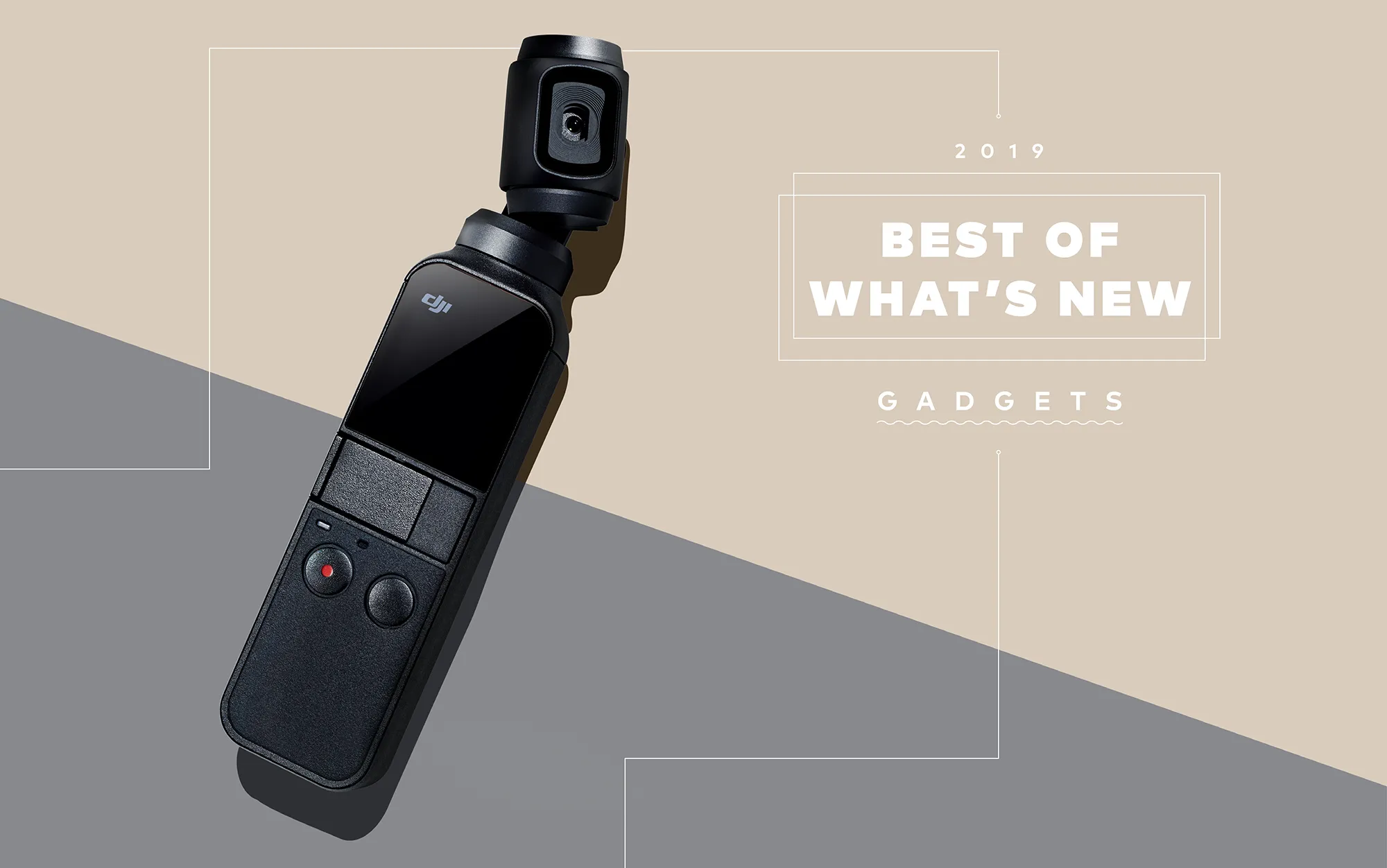
It’s easy to get excited about a shiny new device. But this year, some of the most important advances in the gadget world didn’t arrive in thoughtfully designed, sustainably sourced packaging. In fact, several of the biggest steps forward enhance the networks and engineering infrastructure that underpin our increasingly connected world. But don’t worry, we included some unboxing-video-worthy gizmos too.

All four major mobile carriers have flipped on their 5G networks within the past year. AT&T led the way in December 2018, followed by Verizon, Sprint, and T-Mobile. Though coverage remains limited to metro areas like New York and Los Angeles, and only a handful of devices can tap the next-gen infrastructure, the gains will soon redefine the role of mobile networks. By accessing previously unused bands of the wireless spectrum, the devices can pull down 500 megabytes of data per second—an order of magnitude faster than 4G LTE and enough to download a movie in seconds. But the improvements are about more than jutter-free Netflix: The network could deliver broadband-level speeds to previously under-served rural communities. Experts also predict 5G will usher in an era in which devices like VR headsets and self-driving cars communicate directly with the network (or one another) in real time.

Most VR headsets require you to swing your whole noggin to change your view of the virtual world. HTC’s VIVE Pro Eye, however, monitors the specific location of your pupils. Inward-facing cameras track the direction and focus of your gaze, allowing you to quickly navigate menus and scenes. By training its attention on where you’re actually looking, the computer generating the environments and objects can limit its most detailed renderings to those spots, seriously shrinking the processing power required to run complex scenarios.

Professional video production and animation demand absurd levels of color accuracy, consistency, contrast, and brightness—specs that typically push the price of monitors into the range of, oh, say, entry-level SUVs. Apple’s Pro Display offers that level of precision for just $5,000. The panel illuminates the picture with an array of 576 LEDs, while a dedicated chip analyzes the signal and tweaks the diodes’ performance hundreds of times per second. The Retina screen can reproduce more than 1 billion colors and sustain brightness more than three times the average panel.

DJI’s Osmo Pocket packs a mechanically stabilized 4K camera into a package about the size of a Snickers bar. The imaging system nestles into a three-axis gimbal adapted from the impeccable wobble-reducing tech that DJI uses in its category-defining drones. It shoots at 60 frames per second, and keeping the footage steady enables impressive shooting modes, like time-lapsed video.

Aggressively zooming in on a scene with your smartphone camera typically results in speckly noise and artifacts because most compact shooters rely solely on digital tricks to enlarge the frame. To achieve greater reach, the Huawei P30 Pro packs a 10x telephoto Leica zoom lens. The trick to avoiding a bulging camera? Vertically orient the lens inside the phone, and use a periscope-like prism to let in light. Coupled with the 40 megapixels of digital zoom, the setup captures a usable image at up to 50x—enough power to get a clear picture of the man in the moon.

Virtual reality can make even the most elegant person feel clumsy as they slam knees into tables or fight against a computer-connected tether. Facebook’s wire-free Oculus Quest brings a bit of grace. Four outward-facing cameras on the front of the headset allow it to view your room and—with help from accelerometers and gyros—track your movement. As you roam, the system tells you if you’ve wandered astray by showing you a live feed of just where you are. That should stop you from slaying the knickknacks on your bookshelf instead of digital dragons.

The Fresco iOS app simulates the physical act of painting. Powered by Adobe’s Sensei AI platform, the program mimics more than 100 brushes and an array of artistic techniques: Watercolors spread out onto the canvas (a phenomenon called blooming), and repeated acrylic strokes will build up simulated textures. The software also integrates content-aware tech from apps like Photoshop, so artists can, for instance, delete a splatter shape instead of erasing a blocky, solid line.

Large LCDs on cameras tempt photographers to obsessively review their shots. The habit—called chimping—takes them out of moment often enough that they can, well, miss the moment. Framing shots on Fujifilm’s X-Pro3 requires peering through an optical viewfinder. The prism lets shutterbugs see beyond the edges of the final image, allowing them to spy subjects and better plan pictures. A hinged 3-inch LCD on the back of the 26-megapixel camera flips down so that shooters can review their work, then return to the viewfinder.

Handsets that let you snooze alarms or skip tracks with a hand wave typically rely on power-hungry cameras to spot your flailing digits. The Google Pixel 4 uses a tiny radar chip at the top of the display to monitor the area a foot or two around the handset. The sensor also looks far enough afield to, for example, tell when you’re reaching for your phone to start the unlock process. That makes opening your device a bit quicker.

By 2022, there will be 28.5 billion devices connected to the internet—that’s nearly four gizmos per person overtaxing your home network. The Wi-Fi 6 standard, which rolled out to new networking hardware this fall, allows routers to divide wireless channels into subchannels so that they can talk to more devices simultaneously. It also delivers four times the max speed of the previous version and bakes in a new WPA security protocol, which, working with other Wi-Fi techs, encrypts data on public Wi-Fi. But perhaps the biggest upgrade is the name, which frees us from the befuddling 802.11-whatever convention.

As a growing army of AirPod zombies don their ’buds around-the-clock, Apple’s new H1 headphone processor manages power so efficiently, they’ll scarcely need to take them out. Devices with the chip can constantly listen for “Hey Siri” voice commands without sacrificing a minute of battery life, and provide a 50 percent increase in talk time. The H1 also makes pairing a snap (just put the latest AirPods or the Beats Powerbeats Pro near your device, and they’ll connect in seconds), and speeds up the process of toggling between devices.
Auto

This year, the biggest automotive advances were all about maximizing efficiency. Whether it’s a car that tells other cars about that traffic jam ahead, a diesel engine that combines fuel economy with low emissions, or hybrid and electric vehicles with clever solutions to the technology’s limitations, the best new stuff on the road will save time, fuel, and maybe even the planet.

The 2020 Volkswagen Golf features the Marvel-worthy superpower of omniscience, an ability to tell you about looming hazards and delays. The four-door features the first mass-market vehicle-to-anything (V2X) communication system. The gist: A Wi-Fi transponder exchanges data with automobiles and landmarks like traffic signals within 2,600 feet, telling you, say, that there’s an accident ahead, so slow down or choose another route. Identifying events beyond the car’s line of sight goes beyond the capabilities of imaging systems like lidar and radar, so V2X could help autonomous vehicles get around too. Maximizing its potential requires installing the tech in many more vehicles, not to mention roadway infrastructure. But Volkswagen Group—which also owns Audi, Porsche, and five other automakers—has the scale to convince the industry to give every driver a sixth sense.
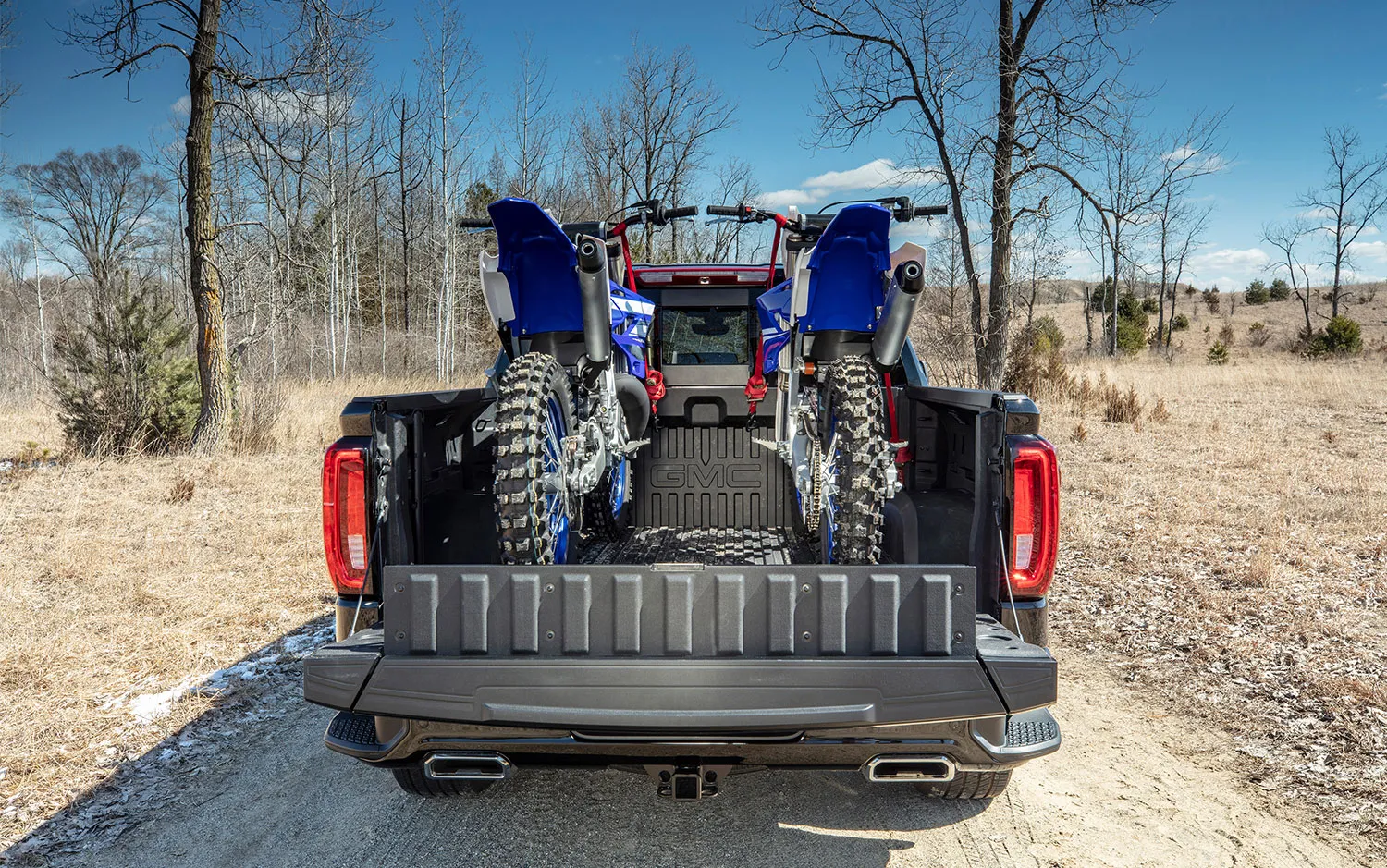
Use a pickup as intended, and you’ll inevitably scratch and dent the cargo bed. Ditching steel for tough carbon fiber makes the Sierra’s optional CarbonPro truck bed all but indestructible. (It’s 60 pounds lighter too, which improves fuel economy.) The material withstands energetic attacks with aluminum bats, but dragging kayaks off the tailgate might leave the tiniest of scratches. No biggie, though, because this stuff won’t rust. By converting pickup beds to carbon first, General Motors sets up the manufacturing scale to one day make components like hoods an affordable option in other vehicles.

Volkswagen’s “dieselgate” emissions scandal convinced most automakers that US consumers wouldn’t buy diesel. But Mazda still believes the maligned technology can provide above-average fuel economy without the pollution. Its trick? A low compression ratio (how hard the pistons squeeze the air and fuel) and twin turbochargers. The twofer eliminates sooty exhaust and offers solid performance. In the CX-5 crossover SUV, Skyactiv-D delivers a respectable 168 horsepower, excellent towing ability, and 28 mpg around town (compared to 23 from the gas version)—without the noise and vibration typically associated with diesel engines.
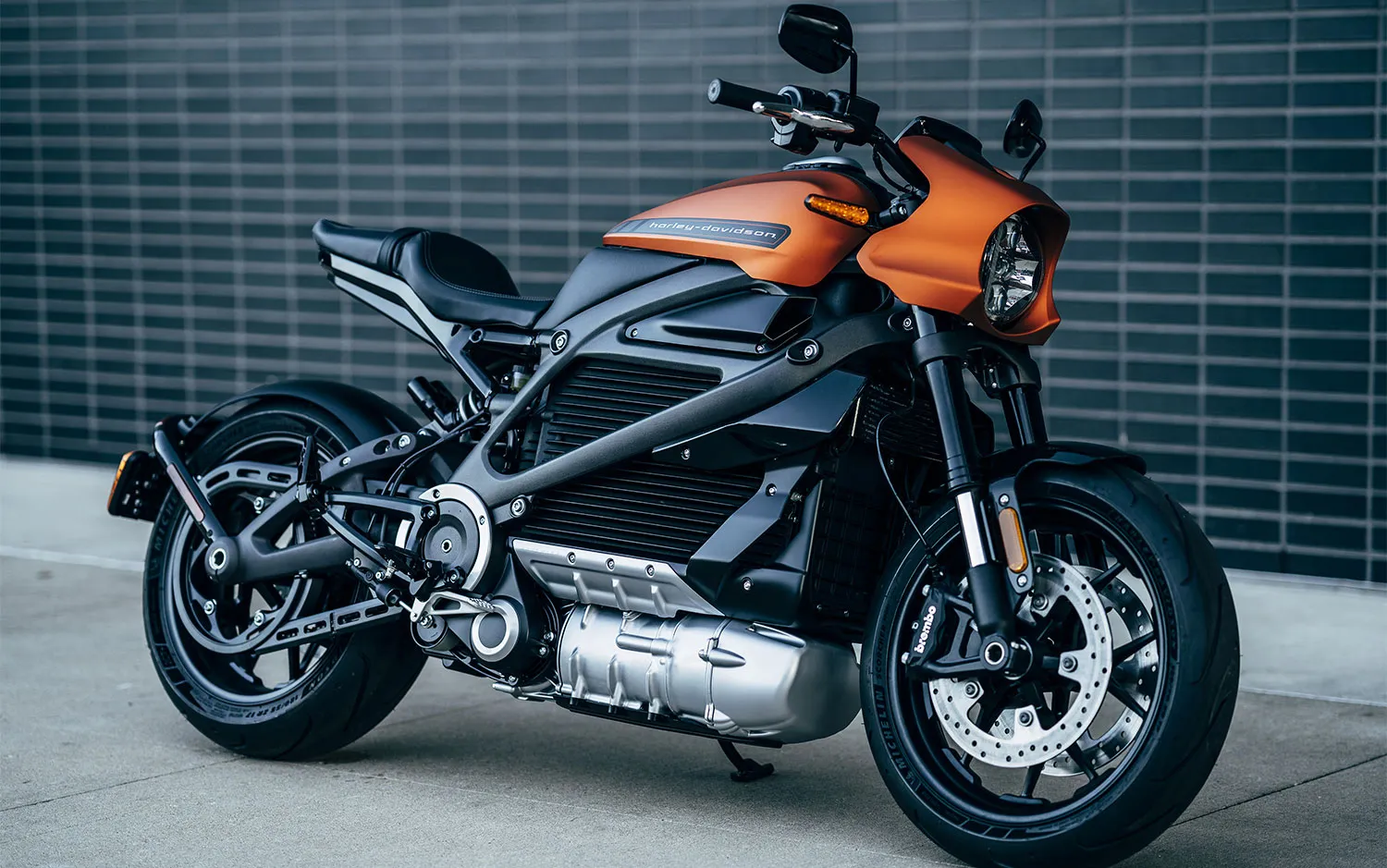
Startups put today’s fleet of electric motorcycles on the road, which helped establish the technology but won’t make it mainstream. The LiveWire is the first from someone with the expertise and scale to create a tipping point. Harley-Davidson custom-engineered everything about the bike, from the adjustable suspension and traction control to the cast-aluminum frame cradling a liquid-cooled motor and 15.5-kilowatt-hour battery. The LiveWire is good for 146 miles around town (95 combined highway and city) and looks so good, you might not even miss the rumble.

Cars that break 200 mph typically use dual-clutch transmissions, which change gear almost instantly but require downshifting sequentially from, say, sixth to fifth to fourth when entering a turn or accelerating to pass another car. That can hamper performance—a nonstarter for Swedish supercar builder Christian Koenigsegg. The nine-speed, eight-clutch gearbox in the 1,600-horsepower Jesko works much like the derailleur on a bicycle: It hydraulically mixes and matches three sets of three cogs, so it can move between any two gears in 2 milliseconds.
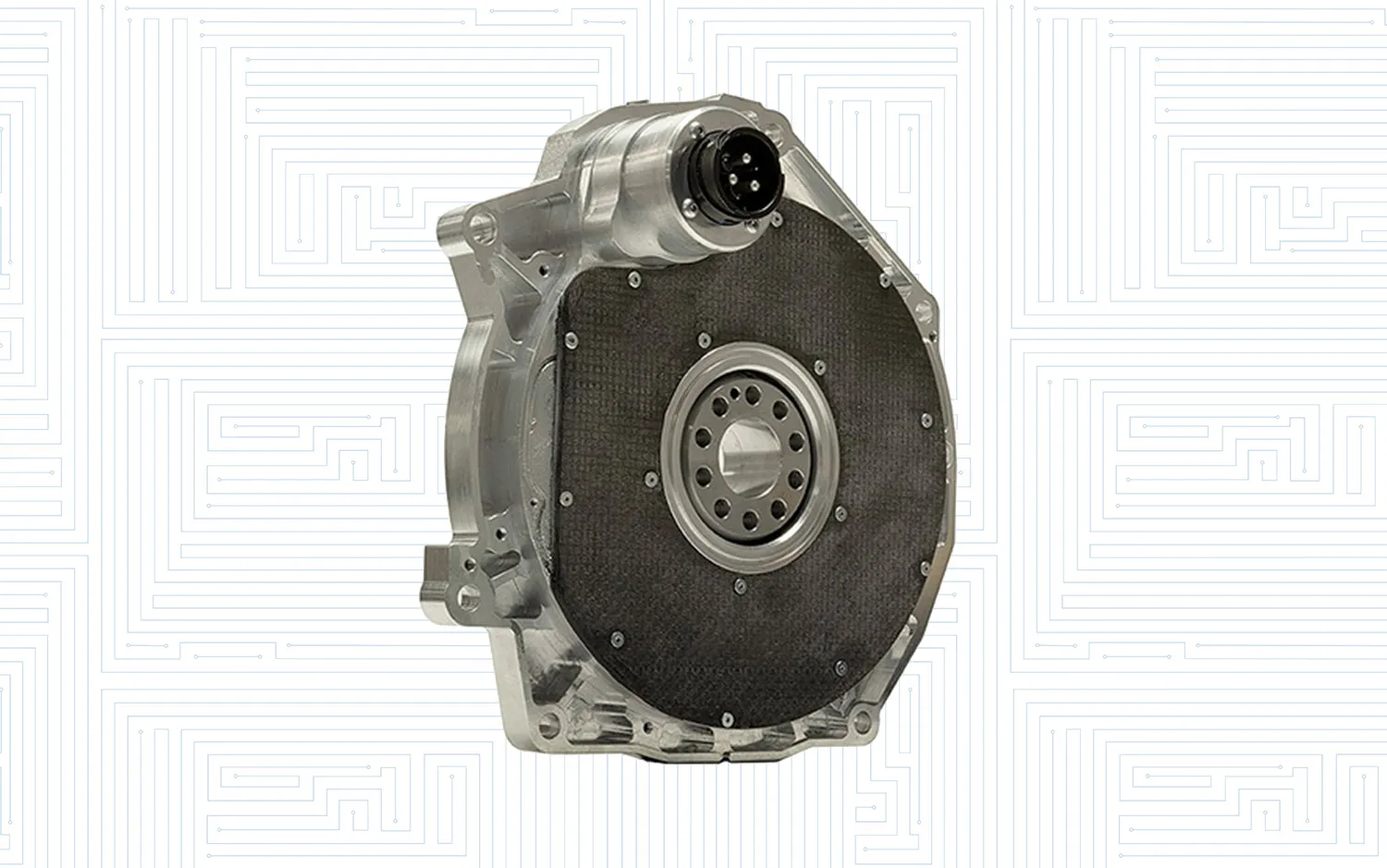
Many of the world’s fastest cars use electricity to augment the oomph of internal combustion—especially during acceleration. Vonnen’s Shadow Drive lets owners of 2009 or newer Porsche 911s, Caymans, or Boxsters enjoy that same boost. It swaps the flywheel between the engine and transmission for a wafer-thin electric motor powered by a battery in the trunk. The setup adds 150 horsepower to the car—and subtracts $75,000 from your wallet. A system for 911s built between 1964 and 1998 should debut in early 2020, marking a new direction in hot-rodding old cars.

The $3.6 million Lamborghini Sián FKP 37 doesn’t shatter any speed or acceleration records, but its hybrid drivetrain could one day propel other cars through such barriers. The 6.5-liter engine gets an added boost from an electric motor powered by a supercapacitor, which is a bit like a very dense battery but charges and discharges much faster. The added hardware helps the 819-horsepower Sián hit 62 mph in 2.8 seconds. Standing on the brakes recharges the cap. MIT helped develop the technology, which you might see in other cars before long.

The outgoing seventh-generation Corvette found the limits of Chevrolet’s front-engine design: All that mass behind the nose can leave the back wheels scrambling for traction, which hampers performance. The answer for the 2020 Corvette Stingray? Put the motor behind the driver, like in a Lamborghini or Ferrari. Putting more weight over the rear axle improves acceleration and handling. Choose the optional Z51 performance package, and the car hits 60 mph in 2.8 seconds. With a starting price of $59,995, the new ’Vette runs with the best supercars for a fraction of the cost.

Perhaps the biggest dig against electric vehicles is how long it takes to charge their batteries. The Taycan makes quick work of it with an 800-volt pack, which requires less current than conventional 400-volt ones. Hitting 80 percent takes just 23 minutes with one of Porsche’s industrial-strength chargers—half as long as a Tesla Supercharger. Can’t wait? Four minutes gets enough juice for 62 miles. The sedan’s unique two-speed gearbox helps boost range and acceleration; Porsche claims the car can go up to 280 miles between plug-ins, and hit 60 mph in as little as 2.8 seconds.

Heavy-duty pickups can haul stupendous loads, but you pay for it with a rough ride. Why? Because the axles ride on long strips of metal called leaf springs, a design that dates to the days of covered wagons. The Ram instead uses coil springs, which have long let passenger cars smoothly tackle bumps. An optional air suspension makes things even cushier. Its 370-horsepower diesel engine produces a Herculean 850 pound-feet of torque—enough to tow 35,100 pounds (that’s three elephants!) without knocking loose anyone’s fillings.
Personal Care
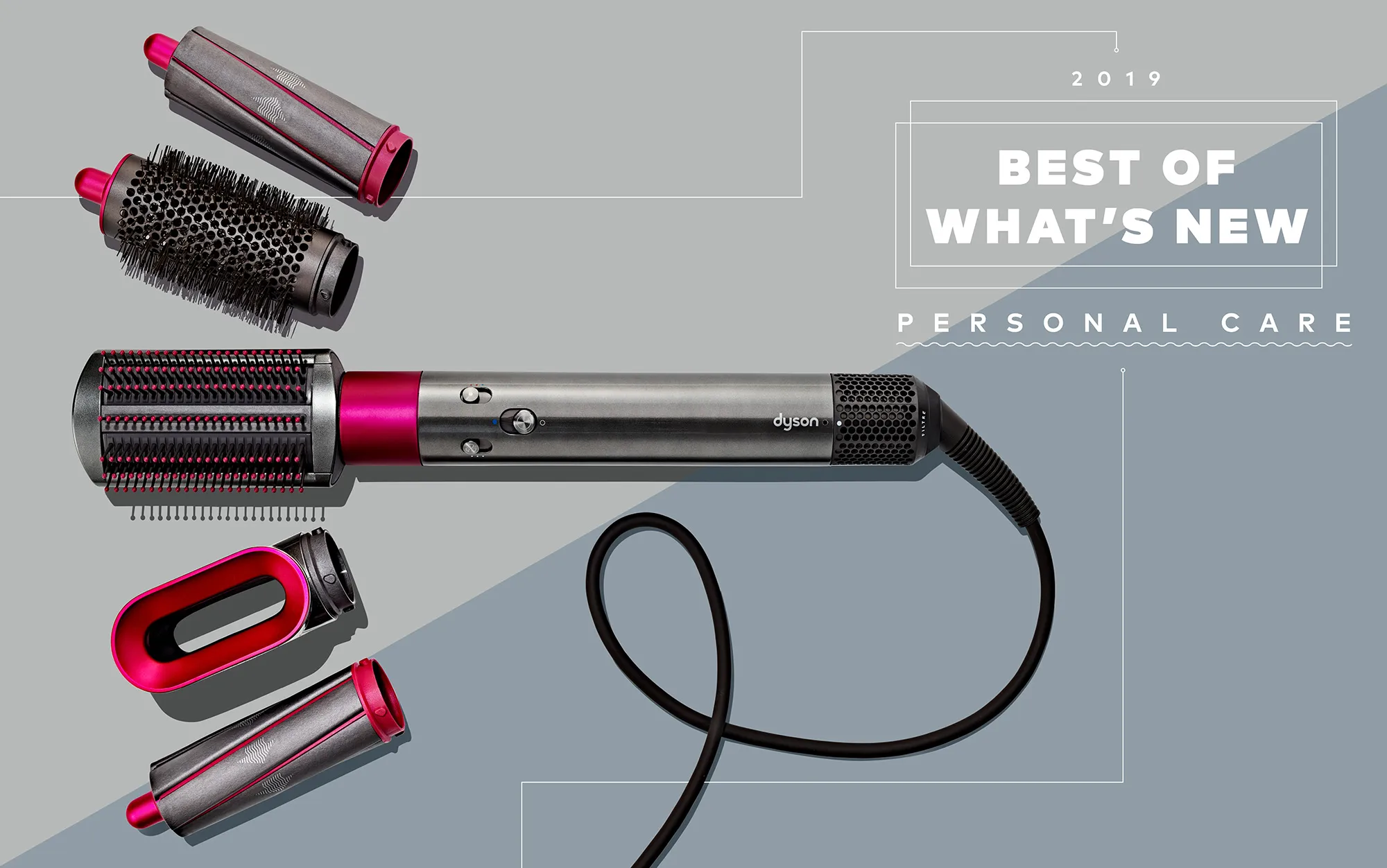
At a time when people are working (and playing) harder than ever before, consumers are hungry for products that make them feel not just good, but better. But the marketing around such spaces—cosmetics, skin- and haircare, fitness, and sexual health, to name a few—has long been a minefield of meaningless buzzwords and pseudoscientific solutions. This inaugural class of Personal Care winners represents some of the best exceptions: These products use genuine innovations in science and technology to improve daily life.

Most beauty innovations are full of hot air, but in the case of Dyson’s AirWrap styler, that’s quite literally a good thing. Its wand-shaped body and fleet of attachments aim to replace dryers, brushes, straighteners, and curling irons. Instead of relying on screaming-hot metal surfaces to shape and style strands, the device, like the Supersonic hair dryer before it, harnesses the controlled flow of hot air. Take its curling barrel as an example: Tiny vents that spiral around the attachment make a vortex that spins hair around the shaft, creating just enough tension to dry a perfect spiral in a few seconds. The result is a hair tool that styles quickly while doing less damage.

A mechanical breast pump can help new parents save milk for future feedings, but the process isn’t exactly convenient: Devices are typically bulky and loud, and tether users with wires and cords. The wireless, wearable Elvie pump is the quietest of its kind. Thanks to a proprietary suction method, the volume stays around 32 dB—that’s even more hushed than a serene bedroom at night. With Elvie slipped inside a standard nursing bra and switched on, users can go about their usual business without worrying about disturbing others (or themselves).

Most sex toys take on one of a handful of recognizable shapes to target a particular piece of anatomy. Sex-toy shop Wild Flower created a more neutral option called Enby (named for a common shorthand for nonbinary individuals) to sidestep those norms. Users can flex and bend the bike-seat-shaped vibrator to fit against a variety of body parts—making it an option for anyone, regardless of sex, identity, or preference. It can also be used throughout any physical or social transition, like gender-affirming surgery or shifts in sexual partners.

A classic shave at the barbershop often includes the small luxury of a pre-blade hot towel. Gillette’s Heated Razor re-creates that experience—no towel or hot tap required. A bar below the blades hits one of two temperatures to offer continuous warmth throughout the shave, soothing what can otherwise be a scratchy morning chore. The flexible, waterproof, and rechargeable blade provides continuous warmth and comfort—a sensation akin to putting on a sweater fresh out of the dryer.

Thanks to the natural cycle of day and night, our bodies are primed to fall asleep when it’s cool. Tempur-Pedic’s latest mattress will help you feel 8 degrees chillier than the brand’s standard models. Copper wire in the polyethylene cover grabs heat and stays cool to the touch. Inside, a phase-change material—a substance that melts and refreezes to absorb and release heat—combines with layers of memory foam. Your body movements press as much as nine times more air through the mattress’s pores than is typical for such foam, which ventilates the material, allowing it to refreeze, drawing more warmth from your body.

Exercising at home is great if you stick to it, which is much easier with interactive trainers like Peloton bikes. But no gadget can take the place of a coach, right? Wrong. The Mirror display acts as an all-purpose gym with one-on-one personal training. Powered up, the 52-inch-tall reflective surface becomes a screen for live and recorded group classes in dance, strength training, Pilates, and a growing menu of other regimens. Customers also can use the device’s built-in camera to connect with private instructors.

As many as 10 percent of all cases of skin cancer occur around the eyelid, but no one wants sunscreen dripping down into their peepers. Shimmershade’s thick, creamy formula swipes on easily and stays put without flaking, creasing, or melting, providing SPF 30 protection—along with four glittery hues to complement a variety of skin tones. Most of the formula’s protective punch comes from zinc oxide, which provides a physical mineral barrier, while octisalate provides a slight chemical assist for broad, long-lasting protection.

Part meditation coach and part teddy bear, this kidney-shaped “robot” is a cuddle-buddy that soothes you to sleep with its mechanical breathing. Somnox snuggles comfortably into your arms at bedtime without straining your neck or shoulders, while its body pulses rhythmically with deep inhalations and smooth exhales. Accelerometers and CO2 sensors help it automatically match your respiration rate, then gradually slow down to coax you into a similar speed—and a state of relaxation. The accompanying app also has settings for waking-anxiety reduction and sweet, sweet naps.

Permanent dye works by opening the outer layer of the hair shaft, giving lifters like peroxide the chance to get inside and remove natural pigment before molecules of new color wiggle in—a process that can fry your locks. ColorKick is a keratin filler that uses that moment of weakness to its advantage, slipping the Alpha Keratin 60ku molecule—a protein derived from healthy human hair—into opened cuticles. Mixed into any hair dye, the salon-only product binds to damaged areas to fill, seal, and smooth the microscopic fissures that make a strand prone to breakage and frizz.

Dozens of factors—from food to mood—can affect skin health, which makes picking products to address dermatological woes a gamble. Atolla co-founders Meghan Maupin, Sid Salvi, and Ranella Hirsch, who met while studying at MIT, realized that data science could help. To create a bespoke serum, customers complete a lifestyle survey and take simple at-home tests to determine their oiliness, pH, and moisture levels. For example, the number of black speckles on a paper strip pressed to your forehead can reveal how slick you get in a given month. Soon, users will be able to scan non-Atolla products to check how well they’ve worked for customers with similar issues.
Entertainment

Movies, music, and video games are all about escape—pulling you out of your reality into something, or someplace, extraordinary. This year, technological leaps in everything from game streaming and filmmaking to guitar playing and binge-watching made it easier than ever to lose touch, however briefly, with the everyday. At the same time, creatives found new ways of keeping the rest of us enthralled.

Numbers matter to gamers. Players want 4K resolution, whip-fast 60-frame-per-second refresh rates, and 5.1-channel sound. That kind of performance typically requires a PC or console with a hefty price tag. For $10 per month, Google’s Stadia game-streaming service shunts the computational heavy lifting to the company’s data centers. That lets players run top-tier titles like Borderlands 3 and Destiny 2 on browsers, smart TVs, and even smartphones. Stadia uses YouTube’s compression and transmission tech, so it needs only a 10 Mbps connection (no problem for most 4G networks) to render smooth kill screens and slam dunks, and 35 Mbps (well within most home broadband) to hit peak performance. Google even built a controller that connects to the cloud via Wi-Fi, a tweak that quells fun-fragging latency. Subscribers will enjoy access to 40 titles, with more on the way—including exclusives you won’t see anywhere else.

Folding smartphone screens struggled in 2019—ahem, Samsung Galaxy Fold—but the hideaway display enjoyed a breakout moment. Unfurled, LG’s R9 television looks like a typical high-end OLED set. Push a button, though, and the 65-inch monitor spools into the aluminum base. Sturdy slats support the flexible panel from behind, while a motor-driven arm quietly extends and retracts it. You can also leave it partially exposed to display quick-glance information—like song titles or smart-home controls.

Noise-canceling tech typically does an A-plus job muffling babbling co-workers or rumbling commuter trains, but it can cause collateral damage: The army of mics and processors murders call quality. Bose’s newest headphones balance your voice and the din of the room. Two outward-facing microphones on the earcups listen to the outside world, while another pair focuses on capturing your voice. Four more inside the cans monitor sound near your ears to keep everything in balance. The array creates the strongest noise-canceling headphones available and the clearest calls around.

The snug confines of laptops make them notoriously hard to update, so playing the latest edition of Call of Duty can mean trashing your rig and starting over. Dell’s Alienware Area-51m gaming clamshell functions more like a tower than a notebook. Remove a handful of screws to free a panel on the bottom of the computer, and replace its desktop-grade central processing unit and graphics processors. The 8.5-pound laptop houses up to seven copper cooling pipes (depending on your configuration) and three high-power fans, the stoutest of which moves a tower-worthy 25 cubic feet of air per minute.

Slip on a pair of Mi.Mu gloves, and you can create complex compositions just by waving your hands. The offbeat instrument, which began in the mind of musician Imogen Heap nearly a decade ago, finally became available for any performer this year. Inertial measurement units—essentially a mashup of gyros and accelerometers—track movement, while sensors in the fingers detect minute gestures. Movements create sound loops, produce pitches, and even play audio clips during live performances, and Glover, its custom software, integrates with professional production apps like Ableton.

Mechanical keyboards provide the satisfying clicks and clacks many gamers crave, but the analog switches beneath each letter don’t register as speedily as their optical competitors. Those precious milliseconds can cost you an epic win. The Huntsman Elite slays the delay by adding an infrared laser to speedily register strokes. Pressing down just 1 millimeter interrupts the beam and grabs your input with 25 percent less movement than conventional clicky switches. Go ahead and make rapid-fire moves; it’ll keep up.

Gigging musicians can swap all of their guitars for an Acoustasonic Telecaster. The spruce top and contoured lip of the sound hole give the acoustic-electric hybrid a rich, full sound when unplugged. Plug it in, and a trio of electronic pickups translate the strings’ vibrations into an audio signal you can tweak to sound like any of 10 preset voices—think ’60s power pop or twangy country—to best suit the set list.

Microsoft’s Minecraft Earth brings the charming, blocky world of a decade-old game into meatspace (aka the real world). The augmented-reality app for iOS and Android allows players to build permanent game-world structures in real environments. Microsoft’s cloud platform, Azure, saves players’ creations and pins them to their physical location, so others will encounter them when they roll by. Visual touches like people occlusion—which makes it appear as though others walk around digital objects—make the scenes exactly the right mix of whimsical and immersive.

Director Jon Favreau’s remake of Disney’s 1994 classic The Lion King is completely CGI yet feels like live action. That’s because the team used a first-of-its-kind virtual-reality shooting setup to plan the film’s iconic savanna scenes. Favreau and cinematographer Caleb Deschanel donned VR headsets to view the computer-generated landscape. The scheme, which could be adapted for future films, allowed them to adjust lighting, plan shots, and reposition cameras just as they would on a regular set—making every shot of Pride Rock feel epically cinematic.
Security

Security is always a work in progress, as designers and engineers respond to new threats online, at home, and on the battlefield. Sometimes that means big, bold efforts like building hypersonic missiles that streak across the sky at five times the speed of sound. But it also means finding ways of filling the small gaps that arise in everyday life, like making it a bit easier to protect our data online or developing an AI-powered security camera that costs just 20 bucks.
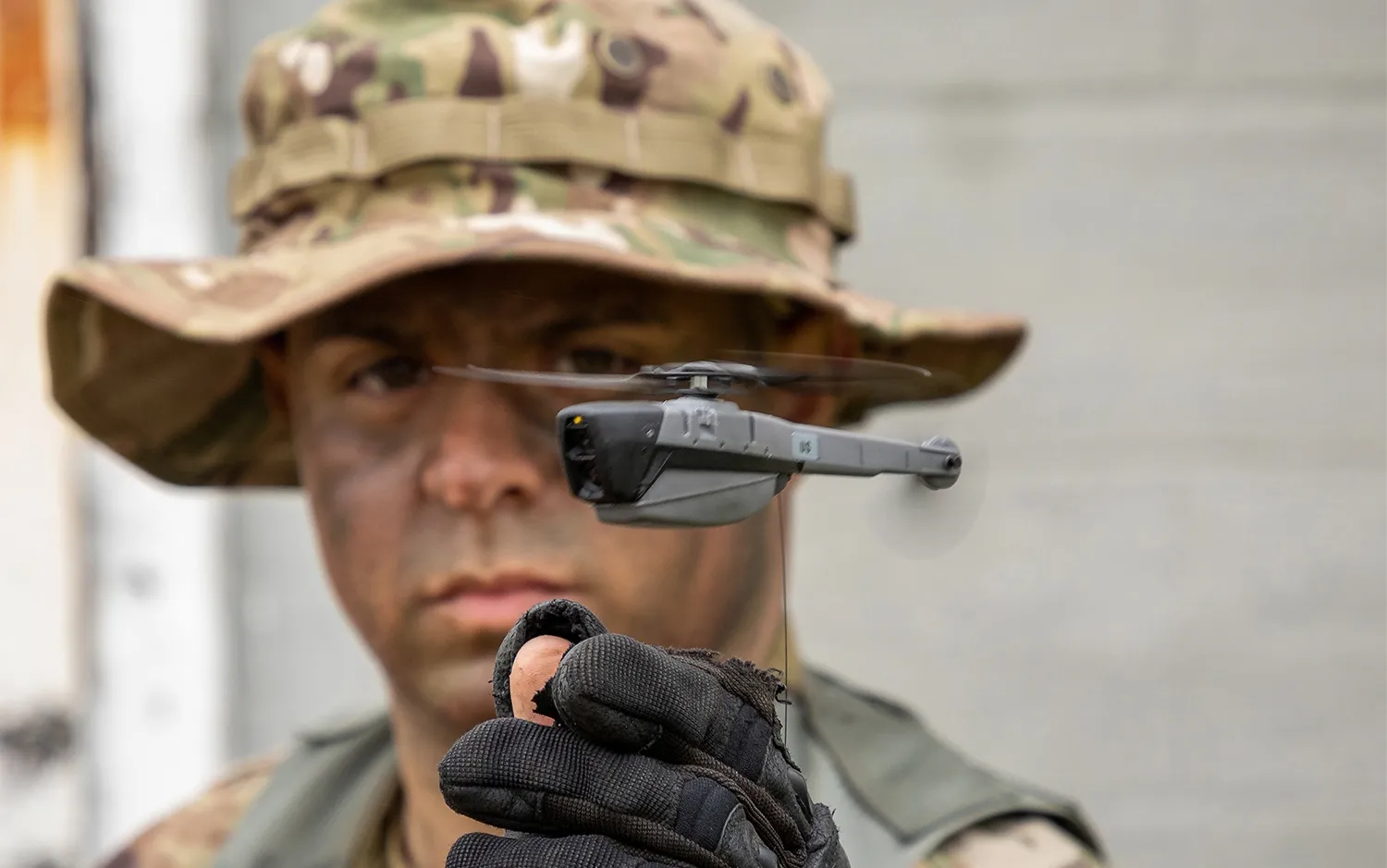
In August, US Army troops in Afghanistan deployed a new reconnaissance tool: palm-size drones that weigh just over an ounce. The Black Hornet remote-control micro-copters stream hi-def video and photos, and their diminutive dimensions—and ability to fly without a GPS signal—make them especially adept at ducking into buildings, bunkers, and caves. FLIR developed a proprietary composite to minimize weight without sacrificing durability, so the wee spies can fly in 15-knot wind, remain airborne 25 minutes, and venture as far as 1.5 miles on a charge. Thanks to a revamped rotor design and flight control software that works much like an autopilot, the Black Hornet is unusually easy to fly using a tablet and a pistol-grip-style controller. Soldiers carry one version for daytime use and another equipped with a thermal camera for low-light conditions. Learning to maneuver them takes just minutes, quickly (and dramatically) increasing a squad’s situational awareness.

The next great reconnaissance airplane will be autonomous. Or not. The Firebird can fly on its own or with a pilot aboard, making it suitable for uncrewed flights of up to 30 hours or human aerial observation. A ground crew can swap the autonomous flight system for a complete cockpit in about four hours. They also can change modular equipment like a camera or infrared sensor in 30 minutes, giving this highly adaptable airplane even greater versatility.
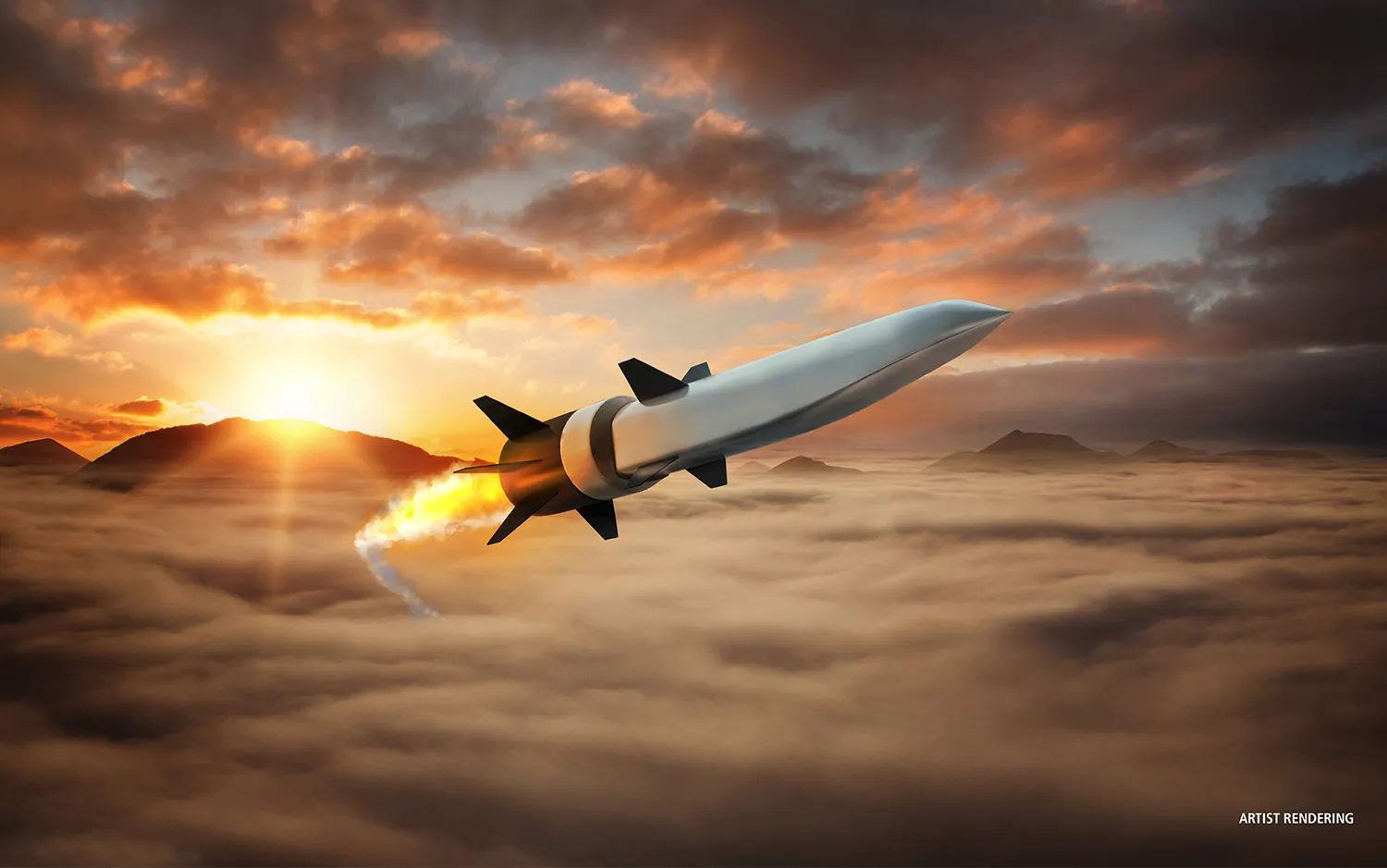
Hypersonic weapons combine the speed of ballistic rockets with the agility of cruise missiles, making them difficult to combat. But flying at up to five times the speed of sound means managing intense heat and optimizing airflow to produce thrust. Manufacturing the intricate parts and complex shapes needed to do that is tricky, and assembling them requires exacting precision. Engineers will make things much easier by 3D-printing key components of the Air-Breathing Weapon. That could give the Pentagon an advantage in an arms race with China and Russia.
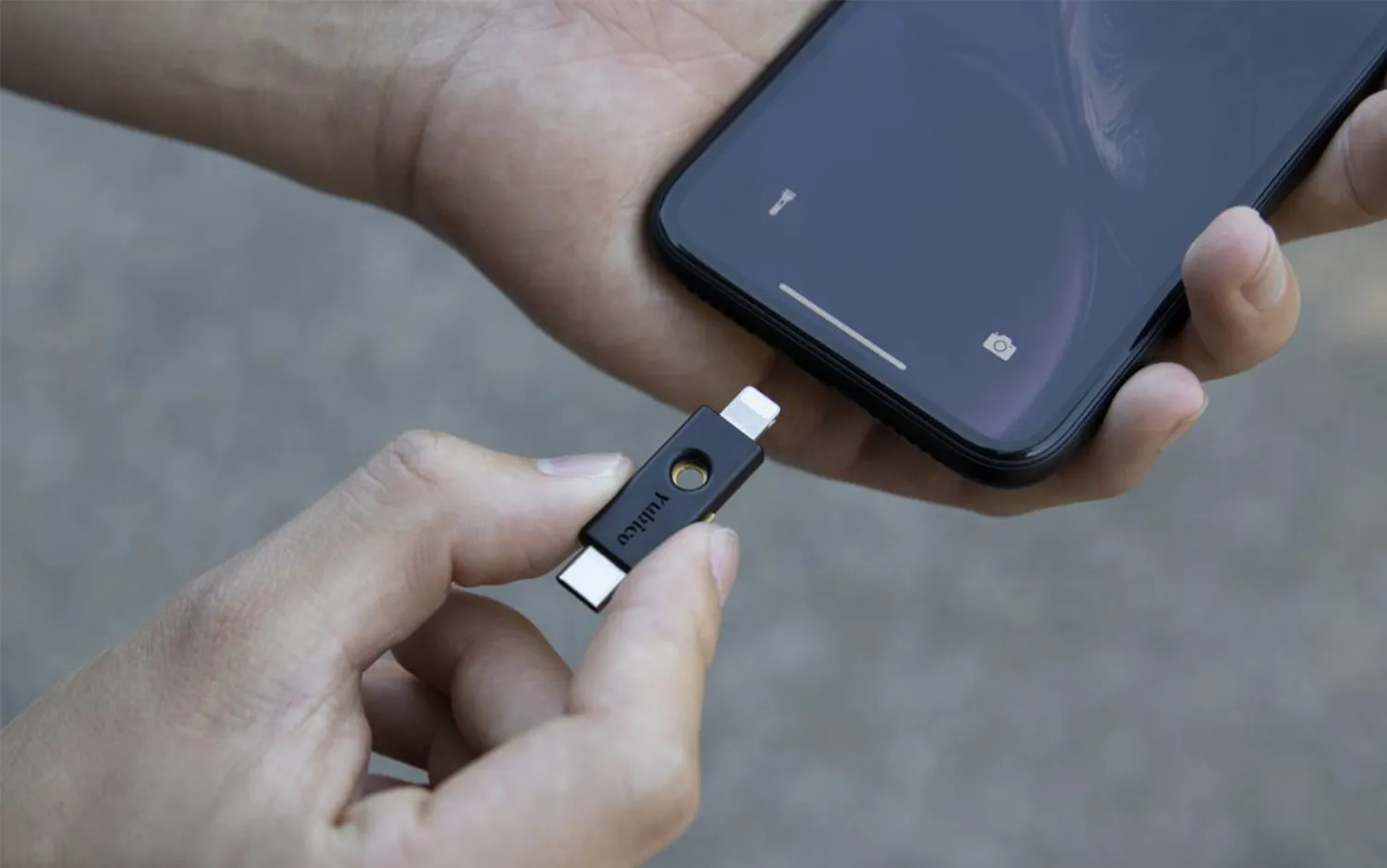
Two-factor authentication has been backstopping our passwords for years, but even those texted codes can leave you exposed to attacks. Plugged into your phone via a USB-C or Lightning port, the Yubikey 5Ci dongle is a physical “key” to augment or even replace conventional password and six-digit passcode combos. Register it with any of the dozens (and growing) of compatible apps and services—including mainstays like Google, Facebook, and Twitter—and go about your digital life quickly and securely.

When an Iranian drone threatened USS Boxer in the Strait of Hormuz this past July, Marines aboard the warship reportedly brought down the threat with radio waves. Now, the DoD won’t confirm any of this, but it’s believed to be the first known defeat of a drone using a weapon that uses highly focused energy (read: lasers! And microwaves too) instead of a projectile. The Pentagon is very hush-hush about how it works, but we know it uses radar, gyro-stabilized cameras, radio-detection sensors, and electronic jamming equipment to autonomously track and attack targets. The system rides on a pair of all-terrain vehicles and is much cheaper than conventional ballistics.

The Pentagon and Microsoft are readying Terminator vision for the field. The Integrated Visual Augmentation System—based on the HoloLens 2 AR headset but engineered specifically for the US Army—will provide thermal vision, digital overlays highlighting people and objects, mission navigation with waypoints, weapons targeting, and more. The encrypted information appears within the soldier’s field of view, providing greater situational awareness and reducing the likelihood of civilian casualties. Field tests began this year, and combat-ready versions could see deployment by the end of 2021.

Digital assistants are helpful, but given Big Tech’s spotty history with privacy, sharing your contacts, appointments, search requests, and other personal deets seems unwise. Rather than saving your info in the cloud—even if it has been anonymized—like other platforms, the Almond Android (sorry, no iOS yet), web, and desktop Linux interface keeps your musings safe on your device. Its servers only interpret queries and send commands (“mute my ringer during meetings”) to your gadget, which processes them through your apps. A crowdsourced repository of commands and features means new tricks pop up all the time.

Deepfake technology uses artificial intelligence to create doctored videos so realistic, you might actually believe the clips where Nancy Pelosi is “drunk,” making it a powerful tool for sowing disinformation. Silicon Valley startup Amber has developed two software tools to identify sophisticated shams. Detect is a video-analyzing tool that spots blurs, pixel discoloration, and other clues that suggests fakery in any video from any source. And the Authenticate free video-recording app and camera software embeds a digital “fingerprint” in footage, so it’s easier to spot doctored content through forensic analysis.

The Wyze Cam V2 offers the standard menu of home-security-camera features: high-def video, night vision, two-way audio, and continuous recording onto an SD card. But its $20 price is the fast-casual to the five-star dining of its three-figure competitors. The company’s trick: paper-thin costs and profit margins. The latest update makes the tag even nuttier: Wyze added an artificial intelligence that can differentiate between, say, falling leaves or buzzing bees and people, which minimizes false alarms.
Home

You don’t need to stuff your house full of smart gadgets to surround yourself with cool gear. Sure, this list features an omniscient light that matches the sunshine streaming through your window—but there’s also a super-rugged tape measure, as well as a stroller that’ll do some of the pushing itself. Mix and match however you please.

For decades, multitool users have had to swallow their angst while struggling to lift out tightly tucked can openers and knives. But after five years of development, Leatherman has come up with a seemingly simple fix: a unique piece of hardware that replaces stiff metal joints with magnets. Those magnets will disengage with the flick of a wrist, but are strong enough to keep all the tools—21 in the P4 and 19 in the P2—folded in when you’re not using them. Engineers also made sure the magnetic field wouldn’t reach farther than necessary, so the P-series won’t stick to your keys. It’s not just magnets, either: The makers ditched pinching metal springs in favor of an elastic polymer that snaps the handles into place when the pliers are in use, allowing for a stronger set of pliers in a nifty portable package.

If you enjoy changing light bulbs, this is not the lamp for you. Dyson’s Lightcycle desk and floor lamps channel heat away from their bulbs with a heat pipe in the arm, technology that extends the life of their LED bulbs to 60 years. The fixtures also sense changes in ambient light to keep your work space at a constant brightness, no matter the time of day or type of weather brewing outside. Connect the Dyson Link app to have the lamp mimic the movement of the sun in your location, emitting warmer beams in the mornings and afternoons and cooler ones later in the day.
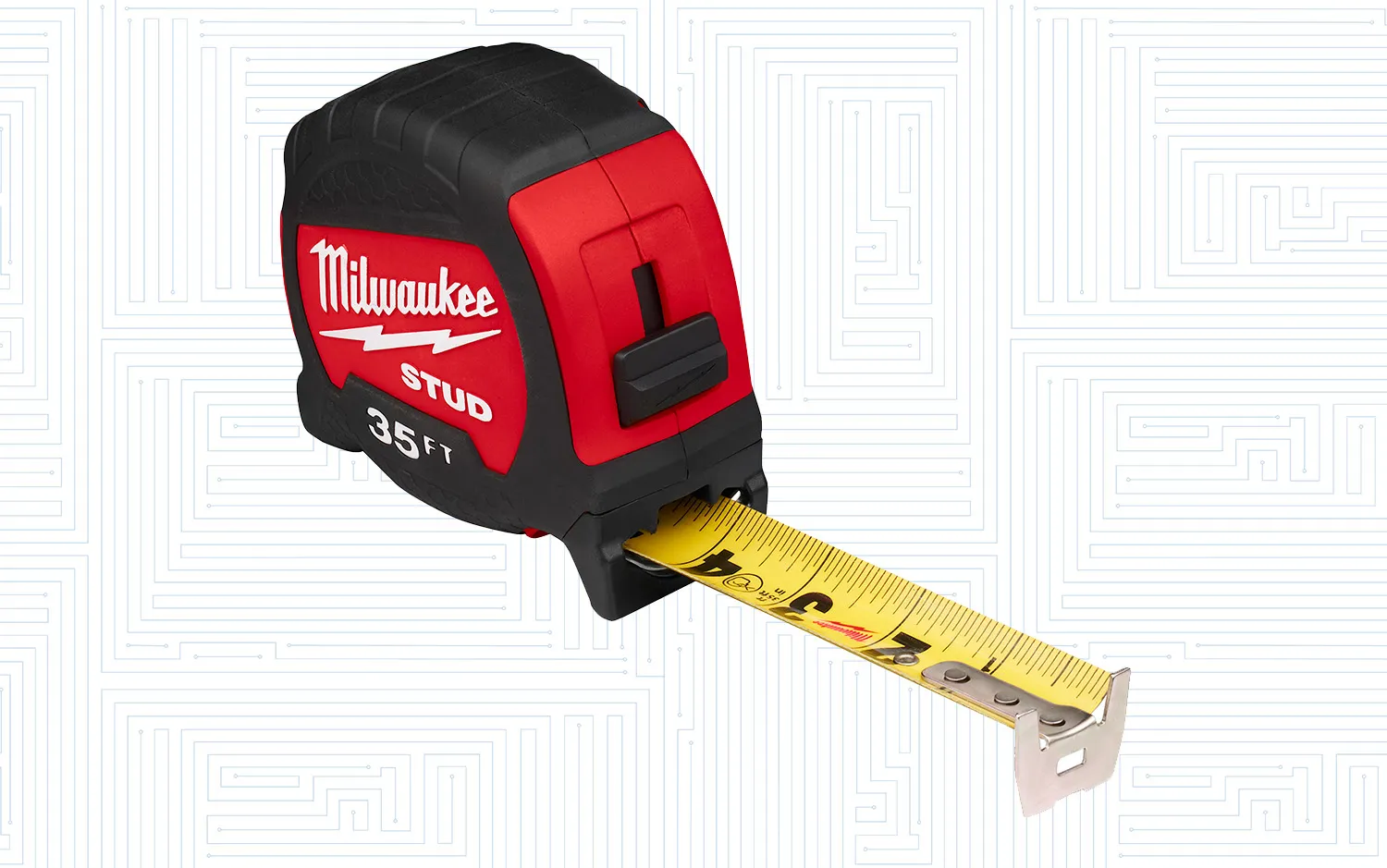
Tape measures take a lot of abuse on the job site; they get bent, snapped, dropped, maybe even kicked down a flight of stairs. The STUD is built to endure all that; its thermoplastic rubber-covered frame can survive an 80-foot drop. The 33-millimeter-wide blade is also coated in high-density nylon to protect it from ripping and wearing, and it curves deeply in several strategic locations, meaning it’ll extend up to 14 feet until it flops. Handy if you can’t get somebody to hold the other end for you.
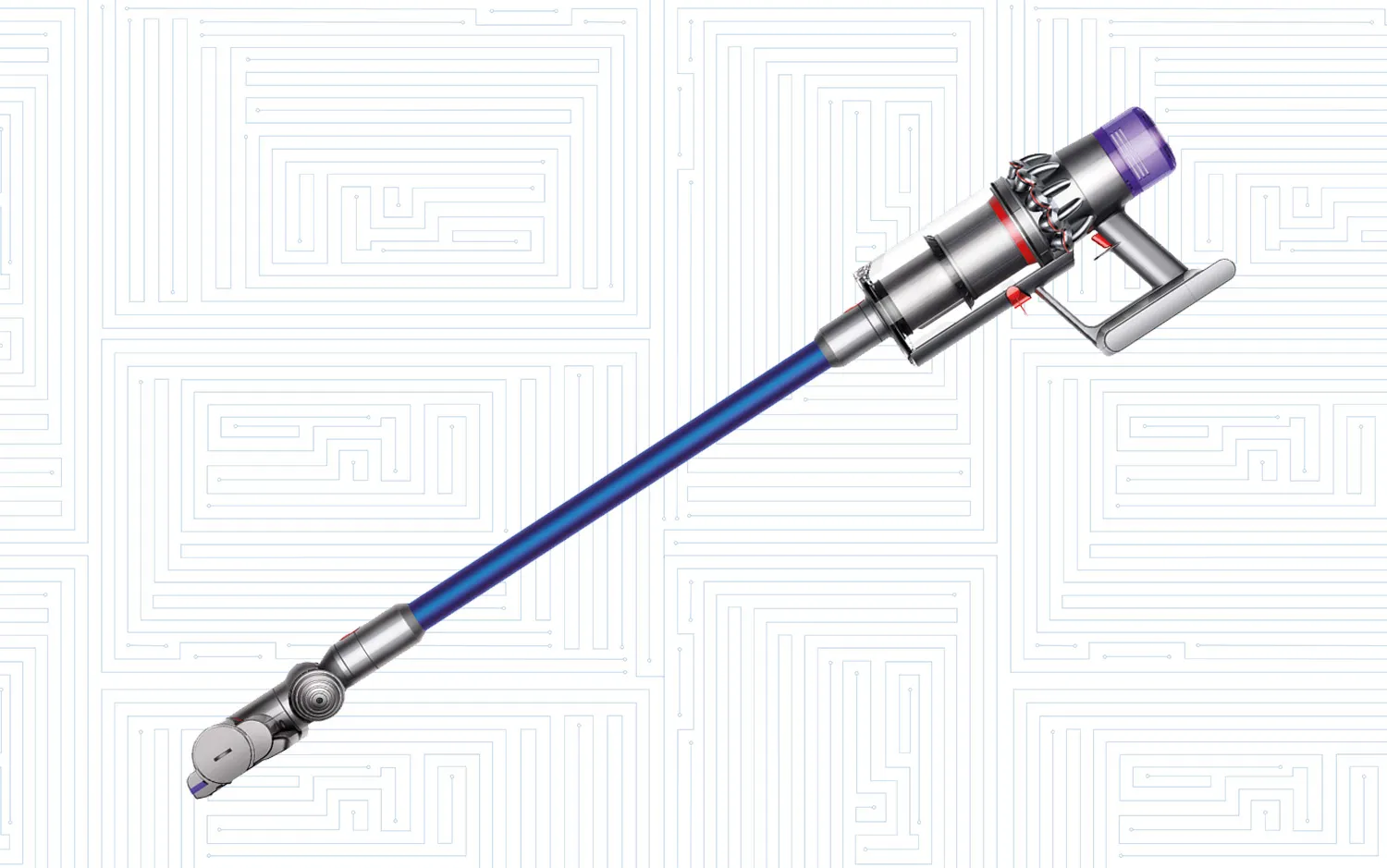
The fifth iteration of Dyson’s V-series knows how to adapt to its environment. Sensors in the cordless stick vacuum’s brush bar measure tension and determine whether it’s moving over a smooth hardwood floor or thick carpet, adjusting battery power accordingly. The wall-charged V11 can run for more than an hour on “eco” mode, and can level up to “medium” or “boost” for more heavy-duty cleaning if you’re willing to sacrifice battery life. An LCD screen at the top of the vacuum shows how much juice you’ve got, along with essential diagnostics like airflow blockage and whether you’ve done a bang-up job (kidding on that last one).

Pots and pans come in a variety of sizes, but faucets rarely get to spice it up. Moen’s new kitchen faucets come with three snap-on attachments to help clean the toughest gunk and hardest-to-reach spots your cooking gear has to offer. The targeted spray acts like a pressure washer to remove stuck-on food; the four-corner spray takes the place of unwieldy bottle brushes; and the broad spray rinses stuff with wide, odd-shaped bases, like tea kettles. The attachments also blast water 50 percent faster than Moen’s standard faucets.

The first electric stroller of its kind in the US, Cybex’s e-Priam can help you shuttle your kid around when the going gets steep. Sensors in the handlebar detect how hard you’re working, and then power the wheels to make the job less strenuous. Take on slopes as steep as 14 degrees with the added assurance that you won’t lose control downhill (the sensor-applied brakes will smooth out the roll). The wheels also assist when you’re crossing rough terrain, so you won’t have to struggle across the beach or through your untamed lawn. The stroller’s battery can last anywhere from a 10K to a marathon, depending on the load it’s carrying and the road ahead.

The motor of a worm drive saw is located slightly to the rear, meaning its internal gears run perpendicular to each other. That gives the tool more power than its direct drive “sidewinder” relatives, at the expense of RPM. The tool’s narrow, elongated shape also lets you cut in tight spaces and provides extra reach when ripping wide sheets of wood. Plus, its blade is positioned to the left, so righties will be able to see where it’s cutting. The cordless part is clutch here: It’s hard to unplug with a worm drive because the gearing requires more oomph. Skilsaw found a way, though, by developing its own powerful battery.

You can’t just plop eggs in some boiling water and hope for the best. You need an impeccable sense of timing, too. If you weren’t born with it, give OXO’s egg timer a try. Just crank it to your desired doneness level (there are seven), tell it how big your eggs are, and it’ll let you know exactly when they’re ready to pull out of the pot. Plus, a lighted progress bar shows you how much time is left in the cooking process—useful for when you have to step away to put on pants. The pear-size gadget also has a built-in piercer that makes peeling shells an absolute thrill. Remember to run the eggs under cold water after boiling, though; otherwise all that punctuality will be in vain.
Recreation

The best technology makes it easier to do the things you enjoy. That might mean taking a long ride knowing your helmet will summon help if you crash, or venturing farther from civilization because your activity-tracking watch draws power from the sun. And everyone will feel better cooking dinner over eco-friendlier camp fuel and pulling a cold one out of a biodegradable cooler. This tech can help you live the life your Instagram followers think you have.

The bottom edge of the lens in Smith’s 4D Mag goggles curves toward your face, creating a bubblelike appearance. It might look odd, but that extra bulge provides 25 percent more visibility than typical ski specs. Obviously, that means a better view of the terrain ahead, but it also comes in handy between runs. Adjusting a chest-mounted camera, queueing up the next playlist, or tightening your backpack straps is much easier when you don’t have to remove or even adjust your eyewear to peer down. A seven-point magnetic-latch system secures the lenses, so swapping out any of the seven color options to match your weather conditions or the rest of your gear.
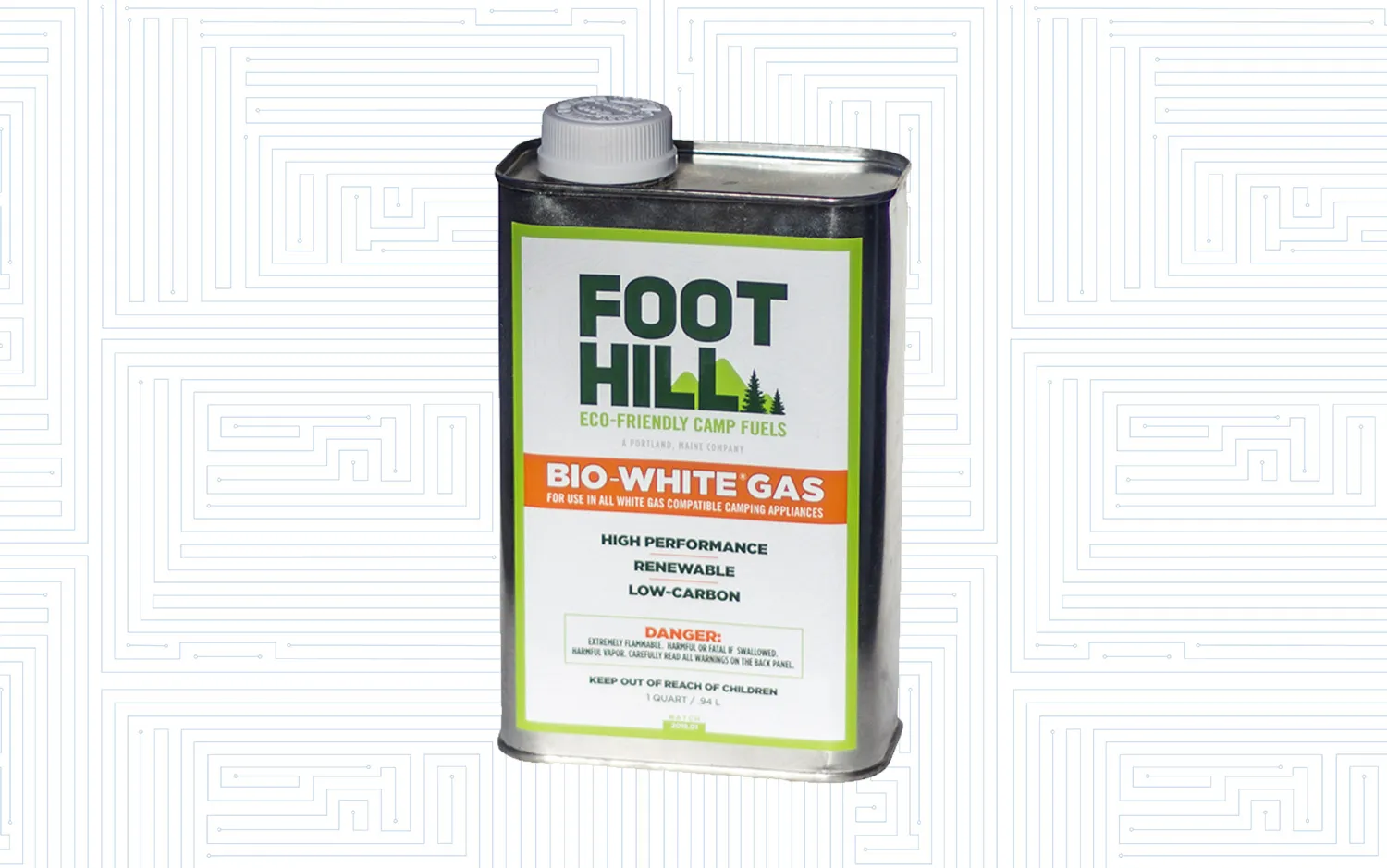
Making dinner in the backcountry usually means cooking over white gas made from petroleum. Foothill Fuels developed a greener, renewable alternative: Bio-White Gas. The company collects veggie oil from restaurants and farms, and refines it into a fuel that works in any stove. Using old french fry grease generates half the greenhouse gases of converting dino juice, and the eco-friendlier fuel burns just like the traditional stuff.

Your hips and shoulders swivel when you walk. Strap a heavy pack to your back, and you restrict that natural movement, causing chafing and soreness. Backpacks with Mammut’s Active Spine Technology feature an aluminum and fiberglass frame with pivot points between the shoulder straps and hip belt. That gives the gear the flexibility to move with your body instead of against it, reducing fatigue and increasing comfort.

An incapacitating crash that leaves you unable to summon help is a frightening risk for any cyclist. Stick Specialized’s ANGI on your helmet, pair it with your phone, and help is one text message away. If the gadget’s accelerometer and gyroscope detect an impact or spill, it sounds an alarm. Fail to respond within 90 seconds, and the Specialized app sends your location to an emergency contact. The device weighs just less than 1 ounce, works with virtually any lid, and doesn’t require a subscription or annual fee.

Tanning leather demands copious quantities of H2O and a nasty thing called chromium sulfate. Ecco’s DriTan technique needs only the moisture in the hide, and minimizes the chemicals by tweaking factors such as temperature and pH. The company says the process saves about 5 gallons of wet stuff per hide—it tans 1.24 million of them annually—and eliminate 600 tons of waste and sludge at its tannery in the Netherlands, one of several using the technique.

Smart watches require nightly charging. But Garmin’s chunky Fenix 6x packs an enormous 450 mAh battery that lasts three weeks. But the real differentiator is the nearly transparent solar panel beneath the tough Gorilla Glass lens. It can suck up enough sunlight to give you three extra days of power, providing more time to check a compass reading during a hike, track a swim or run, or receive notifications from your phone. Even if you turn off the watch, that photovoltaic cell will generate a charge.

Hand-pump purifiers are slow, ache-inducing gadgets that can take one minute to produce about 2.5 quarts of potable water. The Grayl GeoPress cleans twice that amount in the same time by leveraging your body weight. Simply fill the outer chamber and insert the filter plunger, place the whole thing on a firm surface, and lean into it. Pushing down on the lid forces water through a replaceable cartridge that uses ion-exchange mesh and activated carbon to trap nasties like bacteria, protozoa, and even viruses—something many other devices miss.

Styrofoam coolers are a convenient option for anyone who only occasionally needs a portable icebox. Unfortunately, they’re an environmental nightmare that will clutter landfills for centuries. Igloo’s 16-quart Recool replaces the nearly indestructible petrochemical with a mixture of recycled wood pulp and paraffin wax. It can handle 75 pounds of frosty cargo, keeps ice frozen for up to 12 hours, and costs less than $10. The material is robust enough to endure five days full of water, so you can dry it out after an afternoon at the beach and use it again.
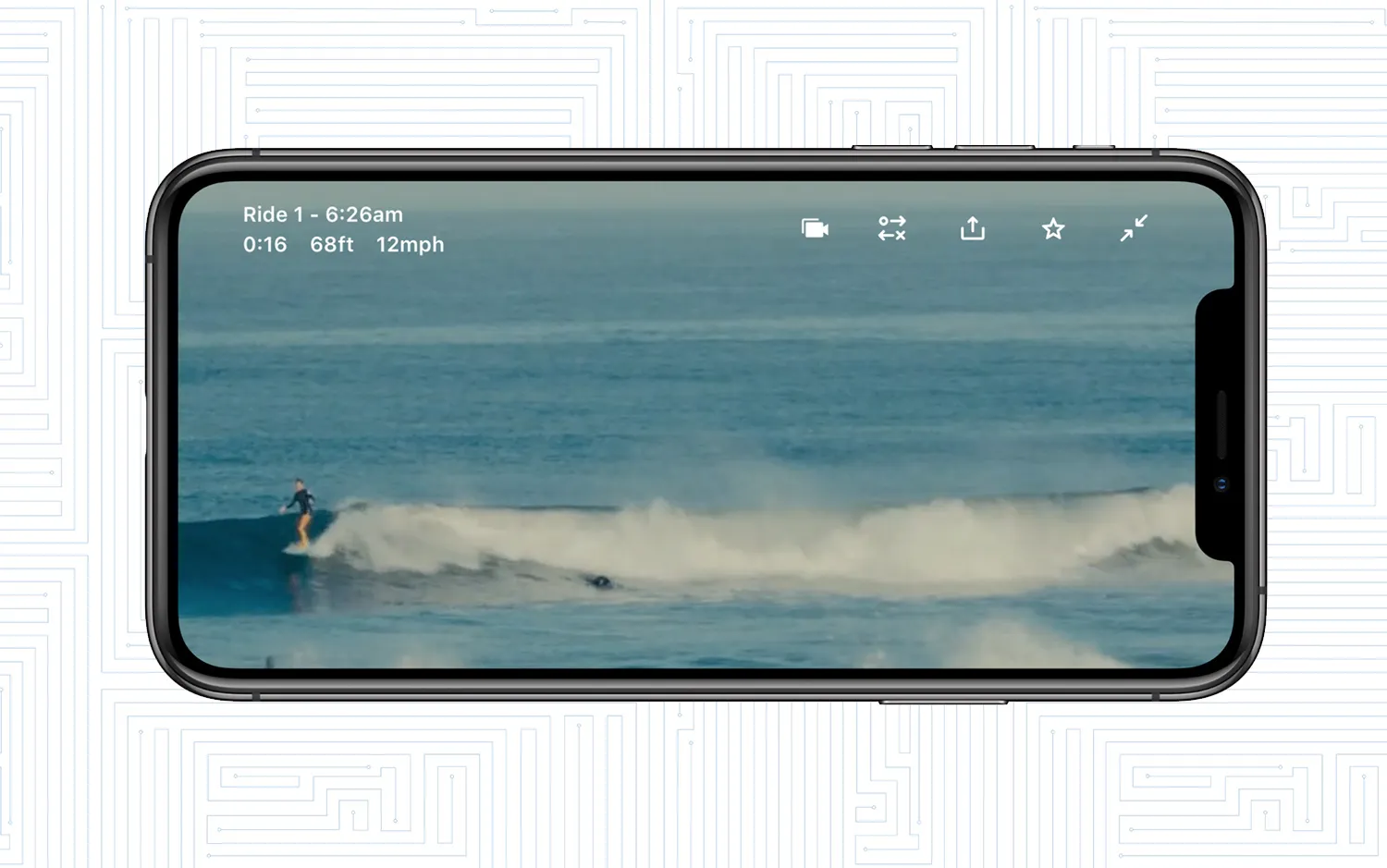
Surfline’s popular app uses a network of more than 500 cameras at spots around the world to let wave riders monitor weather and water conditions. The Sessions iOS app allows you to sync your Apple Watch to the app and use those same recording rigs to capture your ride. You’ll also get a rundown on the height of the wave, how long you rode it, and your top speed. It’s useful for analyzing your technique and improving your skills—not to mention sharing your shreds on social media.

Most housebound trainers offer just a few adjustments, a one-size-fits-most approach that doesn’t effectively mimic real-world riding. Wahoo’s $3,500 Kickr precisely replicates your ride. Snap a pic of your bicycle, and the iOS or Android app walks you through tweaking the seat height, bar position, and other specs to match. It even lets you shift gears. A carbon belt connects the crank to a flywheel for that I’m-actually-pedaling sensation, and a tilting mechanism changes its inclinate as you descend or climb, making it feel like you really are slogging up Alpe d’Huez.
Aerospace

The most awesome aerospace innovations of this past year aren’t just cool contraptions designed to cruise through air and space at breakneck speeds. They’re hints at what might be mainstream in the future. From an experimental craft that could help usher in a new period of quiet supersonic flight to a drone destined to fly on Mars, these machines are made to push the edges of our engineering envelopes.

The LightSail 2—a 31-inch-tall satellite attached to a 18-foot-wide sail—reveals what spaceflight could look like by mid-century. Orbiting Earth since June at some 16,765 mph, the craft is fueled only by photons from the sun’s rays. The particles produce momentum as they bounce off the ultra-reflective, ultrathin Mylar (a better version of the stuff in space blankets). A virtual mission control will let people track LightSail’s trajectory until next year, when the craft will de-orbit and burn up in the atmosphere. The Planetary Society, which developed this tech in the early 2000s, hopes to see others improve on the concept so that one day it might be a low-cost, low-polluting propeller to destinations as close as the moon or as far as Alpha Centauri.

Here’s a radical idea: Let’s swap in planes instead of traditional rockets to propel small satellites into orbit. To try this old-meets-new method, Virgin Orbit attached its flagship LauncherOne rocket to the left wing of a retrofitted Boeing 747. At 35,000 feet, the nearly 70-foot-long rocket detaches from the plane, fires its engines, and carries its payload to space—while the jet returns to the tarmac to fly another day. The $12 million cost is dramatically cheaper than fuel-intensive vertical flights (a SpaceX Falcon 9 launch, for example, runs around $57 million). LauncherOne should have its first formal test flight either this year or early next, and is already contracted for several commercial missions—including one to Mars.

Your navigation apps run off a hodgepodge of satellites, the oldest of which dates to 1993. That will change when GPS Block III, developed by Lockheed Martin, takes over the skies. Compared to its predecessor, this modern fleet of at least 12 orbiters will be three times more accurate for civilian users, and, for the military, provide more powerful signals and eight times better anti-jamming capabilities. The crafts will also last 15 years—25 percent longer than the ones circling Earth right now. The first one launched from Cape Canaveral, Florida, in December 2018, and the second this past August. The third goes up early next year.

After 20 years of fine-tuning, the Deep Space Atomic Clock started ticking in August, kicking off its year-long orbit of the planet. Like atomic clocks before it, the timekeeper works by measuring stable and precise frequencies of light, in this case emitted from mercury molecules. The compact, 37-pound device is 50 times more stable than current atomic clocks, losing only one second every 10 million years. That sort of accuracy is helpful for studying the cosmos (it can calculate the distance between solar bodies by measuring the time it takes for a signal to travel between them) and crucial with space travel (one tiny blip could make a probe, or a colony of people, miss a destination by thousands of miles).
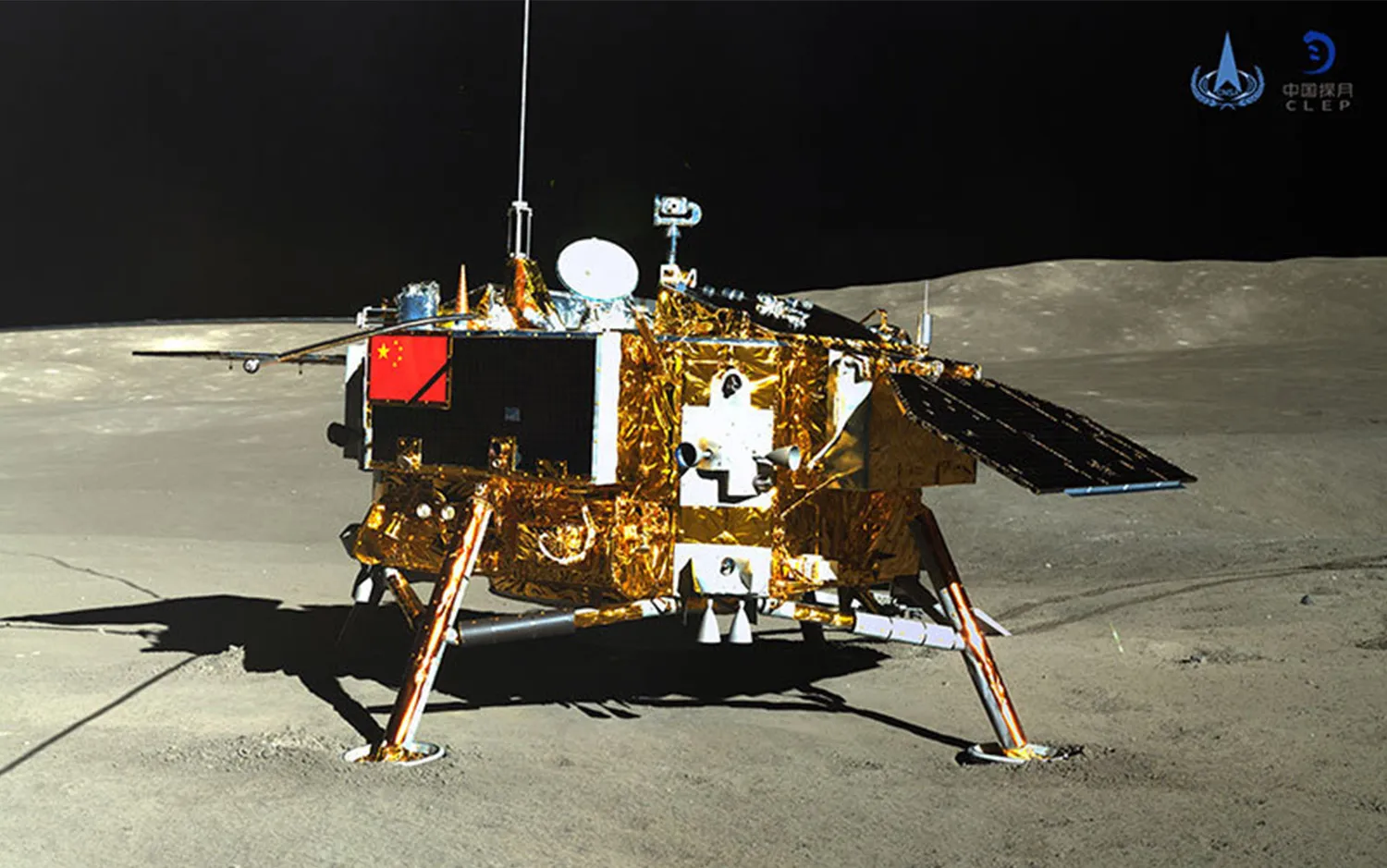
For the China National Space Administration, 2019 started with more of a whimper than a bang. Its Chang’e 4 lunar rover pulled off the first soft landing of any spacecraft on the far side of the moon in January (NASA had two impact crashes in 1962 and 2013). And the craft hasn’t stopped since: Just a couple of days after touchdown, Chang’e’s Yutu-2 rover trekked about 390 feet to analyze geological materials that could give us a better sense of how the moon evolved. More recently, it deployed its strangest payload: a Lunar Micro Ecosystem that sprouted cotton seeds in a small biosphere. The experiment lasted nine whole Earth days.
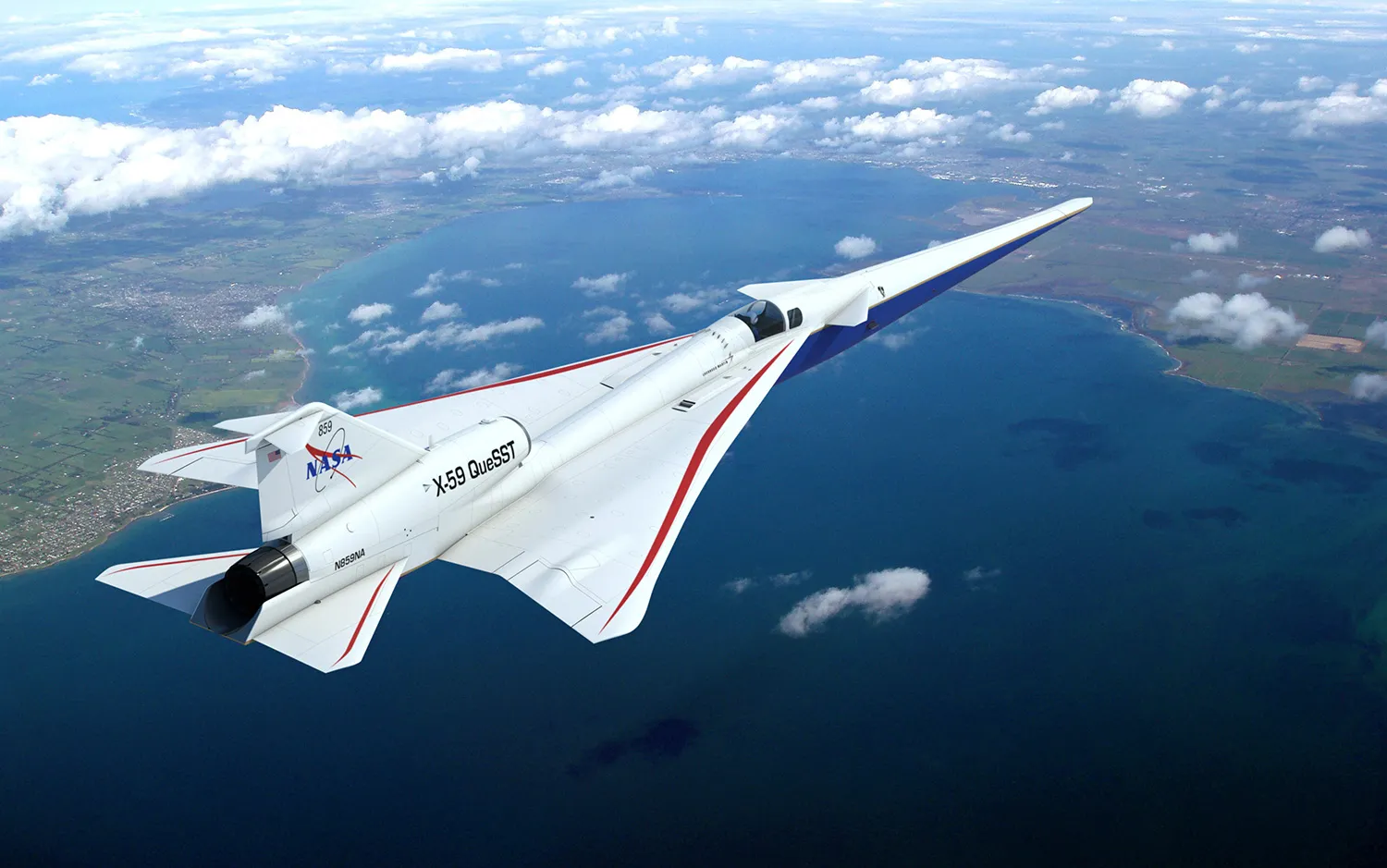
It’s been nearly a half-century since the FAA banned supersonic civilian flights over land because of the telltale booms they produce. NASA and Lockheed Martin hope to reverse that with their X-59 QueSST aircraft, currently under construction in California. The 97-foot-long experimental plane will fly faster than sound, but its designers have engineered it to do so as quietly as possible. Typical supersonic aircraft create a sonic boom when shock waves from the nose and tail merge; because of the X-59’s distinctive shape, those two ripples never do that, so the resulting sound is more like far-away thunder or a dull thump. If the initial flight, scheduled for 2021, goes well, the jet could help pave the way for airplanes that cut flight times in half.

Air Force pilots must master their gravity-busting skills before hopping into pricey front-line fighters like the F-35. Those crucial lessons take place in advanced trainer jets—tandem two-seaters where an instructor and student fly together. Boeing and Saab designed and built their latest version with some much-needed upgrades: Pilots in both the forward and aft cockpits, where the tutor typically sits, get touchscreens to access navigation and communications systems or information about the craft’s health—just as they would on many modern jets. The rear station rests higher than the one in front so the teacher can see over the student; and the plane can accommodate pilots of a wide range of sizes, making it a tool that any trainee can embrace.

Bell’s 6-foot-tall, 120-mph beast operates in a different manner than your standard drone. As usual, the APT 70 uses four propellers to rise into the air, but when it’s ready for horizontal flight, the entire craft pivots 90 degrees so that its two long sides become wings that hold roughly parallel to the ground, creating lift. The extra aerodynamic boost gives it a range of about 35 miles, well beyond the reach of smaller delivery craft, such as one from Amazon aiming for 15-mile trips. And with a cargo capacity of up to 70 pounds, the APT 70 has the heft to transport large goods like industrial components or medical supplies, as opposed to making small package drops in your yard.

No one has ever flown a plane on another planet. But with the mini Mars Helicopter, NASA is looking to blaze a new (con)trail in very foreign airspace. Engineers at the Jet Propulsion Lab designed the 4-pound chopper’s counter-rotating double blades to hover in an atmosphere that’s as thin as Earth’s stratosphere. Once it’s deployed in two years, NASA will use it to glean lessons on how to create more-autonomous flying machines for the Red Planet. Its cellphone-grade color camera might even send back pictures more vibrant than the grayscale ones from the Curiosity rover.

Instead of relying on a regular tail rotor to keep it from spinning in circles, Sikorsky and Boeing’s SB>1 Defiant helicopter holds steady with a pair of 56-foot rigid carbon-fiber rotors that spin in opposite directions from each other. The chopper, which grew out of a long-running Sikorsky program known as “X2,” also boasts what’s called a pusher prop in the back—an addition that should let the bird hit 288 mph or more. That’s incredibly fast for choppers, which typically cruise around 150 mph. Someday craft like this could replace slower, old-school Black Hawks as they carry up to a dozen soldiers into combat.
Engineering

We may be tired of hearing about the climate crisis, but here’s the thing: It’s still the most important challenge we face today. The good news is, lots of companies are taking novel tacks to make smarter use of the planet’s finite resources. Modernized sails might soon give the shipping industry a boost in fuel economy, and mechanical trees will shortly be scrubbing carbon dioxide from the air. Consumers can even pitch in by hopping on the fake-meat train or buying jeans dyed with greener indigo. Of course, this year’s winning engineers aren’t all just inventing new forms of damage control—there are a few not-so-simple pleasures on the list, for Star Wars buffs and robot fiends alike.

It’s hard to get a meat lover to truly enjoy a veggie burger, but the future of our planet depends on people eating fewer cows and more plants. Sure, we could scarf more beans and legumes, but Impossible Foods knows that when you’re craving a hamburger, only beef—or rather, heme, the iron-containing bit of hemoglobin—will do. Heme molecules are a large part of what gives meat its meaty flavor, so engineers at the California-based company created yeast cells that produce large quantities of the stuff. Their 2.0 version, available in some groceries and fast-food chains, blends soy and potato proteins (no more wheat, making it gluten-free) for texture, with coconut and sunflower oils to mimic beef’s fattiness. In the end it’s about as healthy as a real burger; it even has the same iron and protein content. The result is a patty so convincing, longtime vegetarians might get grossed out. And really, that might be what it takes to convert meat-loving Americans to a more sustainable diet.

Say you’re a video-game designer, and you need to generate a virtual landscape featuring a still lake with a snowcapped mountain. It would take ages to make that image by hand, but with Nvidia’s GauGAN software, you can essentially paint the basic shapes, then let its neural network render the rest in photo-realistic detail. The consumer preview version just does stills (and you’ll have to insert any character art yourself), but gaming giant Nvidia has already created a demo using solely AI-generated graphics. They hope to shave thousands of hours off development time for future designers.

The Imagineers behind Disneyland would like you to forget that you’re in Disneyland. Their newest 14-acre stretch in Anaheim, California, which opened this May, instead places you on the built-from-scratch planet of Batuu, where you can share the streets with animatronic droids and whizzing lasers. Pilot the Millennium Falcon from a cockpit simulator or head off-planet in trackless escape pods that make you feel like you’re plummeting out of a Star Destroyer. With an amalgam of architecture, faux habitats, and fictitious languages, you’ll feel as if you’ve walked straight into the Star Wars universe.

A forest of 1,200 mechanical “trees,” designed by Silicon Kingdom Holdings and Arizona State University scientists, is poised to pull more carbon dioxide out of the air than any human-made endeavor before it. Instead of wood, these metal columns (the specific material remains under wraps) use discs made of sorbent, which can absorb three times its weight in carbon dioxide as the wind blows through it. A cluster of 12 can suck a metric ton of the gas out of the atmosphere every day; a full lot, like the pilot one SKH is planning to install in California, can remove up to 36,500 metric tons annually. That’s nearly 1,844 American households’ worth of emissions.

For less than the cost of a couple of laptops, anyone can bring home a robotic arm with built-in algorithms that train it to fold laundry, clean the bathroom, or unload a dishwasher. What the bulky, low-powered arm lacks in precision, it makes up for it with uncanny, humanlike perception: It uses visual and tactile sensors to judge distances and apply gentle pressure through clamplike grippers. At the moment, Blue is exclusive to UC Berkeley labs, but it’s projected to ship to households in the next few years, where it might someday have as many uses as smartphones do today.

It’s been decades since denim’s been dyed with plant-based indigo. Today, manufacturers use a synthetic powdered version that requires 100 times its weight in petroleum to produce. Fashion biotech company Tinctorium’s dye, on the other hand, comes from genetically edited E. coli bacteria, which take in sugar and release a molecular precursor to indigo. The substance is then combined with an enzyme to produce the actual chemical pigment. So far, it’s been used to color a scarf and cotton yarn; next year, Tinctorium will test it on pants, and after that, hopefully, those mom jeans you’ve got your eye on.
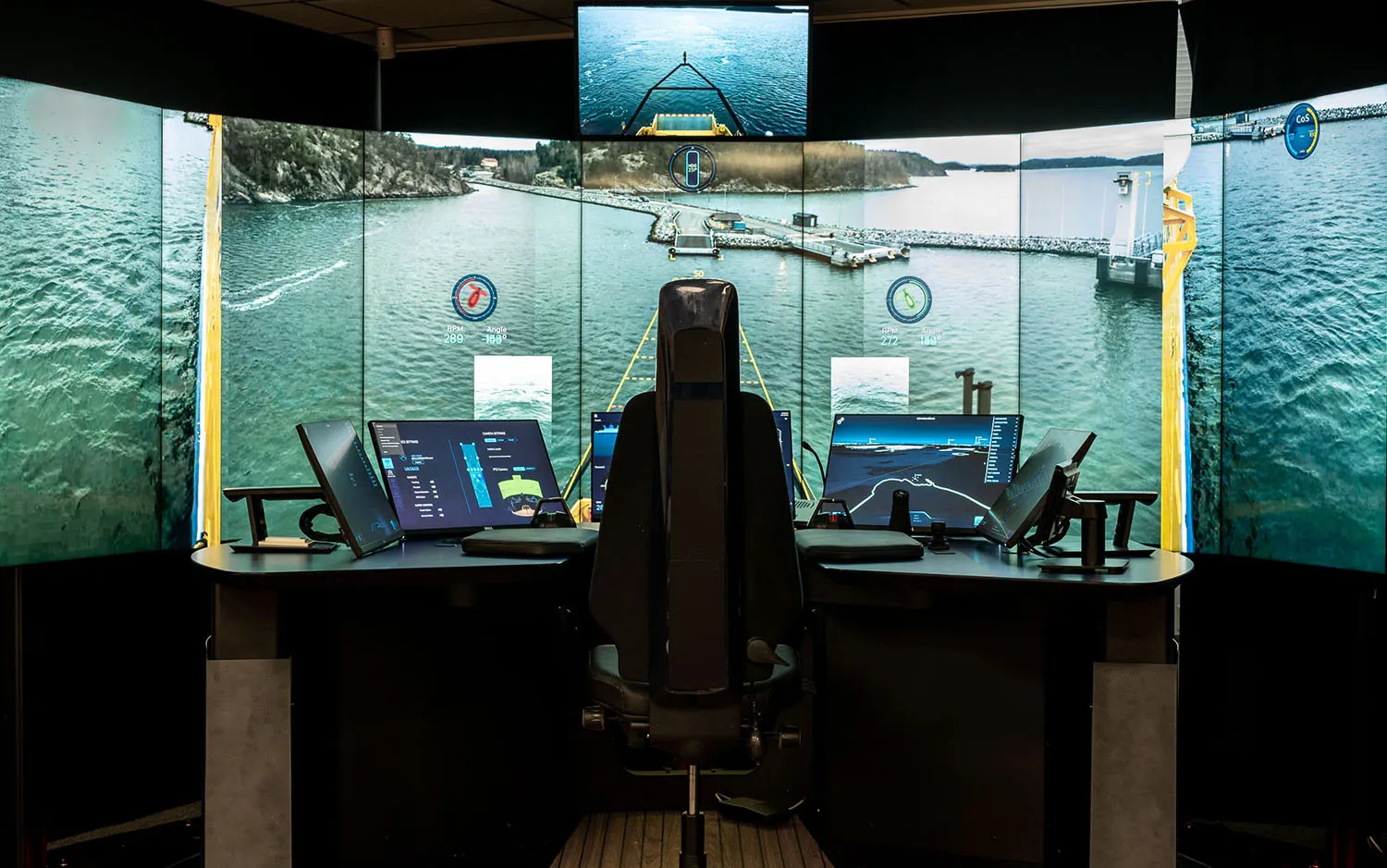
On December 3, 2018, 80 passengers rode a ferry with no crew between two islands in a Finnish archipelago. The captain sat 31 miles away, on call in case of an emergency. By running point-to-point trips that don’t require complex directions, ferries could be the perfect incursion into an autonomous-driving world. The SVAN module, which uses lasers, radar, and computer vision to navigate waters, can retrofit onto any ship, which could help the shipping industry cut down on personnel costs. More importantly, the system could prevent the 75 to 95 percent of marine accidents that occur from human-operator error.

Male chicks are fairly useless to the poultry industry: They can’t lay eggs or fatten up quickly enough to churn out 5-cent wings, so farmers slaughter 6 billion of them for naught each year. Respeggt found a way around that: punch a 0.3-millimeter-wide hole in a shell, suck up a drop of embryonic urine, and test for estrone sulfate, a hormone only female chicks produce. Male embryos then get processed into animal feed, while ladies head to the hatchery. Berliners can already get cartons with the Respeggt seal, but the rest of the world is still on the waiting list.
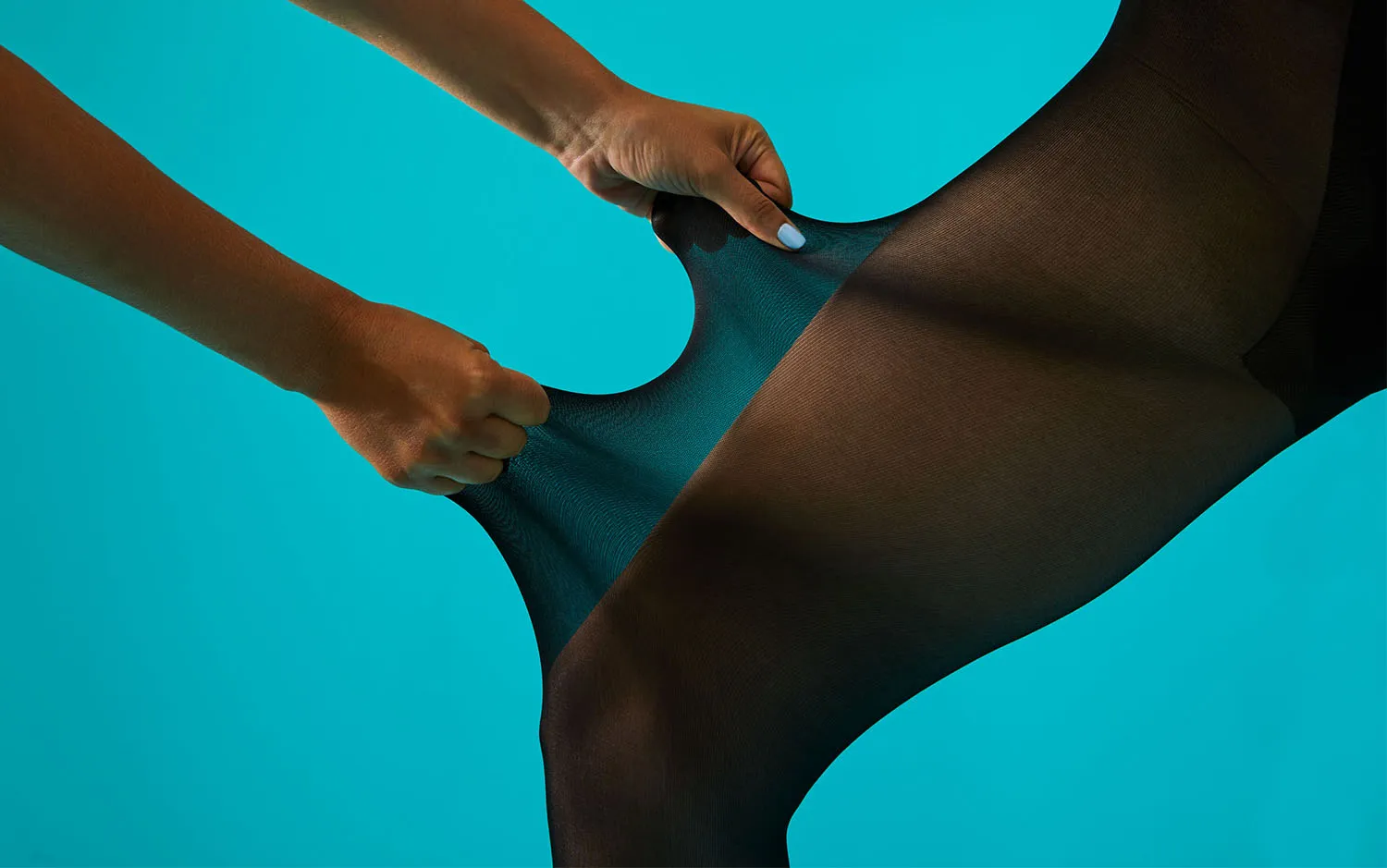
Flimsy bits of lingerie that you trash and replace every other week, sheer tights are bound to rip—unless they’re made from a featherweight polymer with a tensile strength rivaling that of steel. Sheertex’s proprietary fibers are spun from some of the same stuff in climbing ropes and bulletproof vests; they’re so strong, they require custom knitting machines (the standard ones broke from all the pressure). You could shove a high heel into the things without tearing them, making them a far better investment than the more disposable alternative—both for you and the planet.

A map of the HZMB looks almost like an amphibious racetrack. The 18-plus-mile roadway takes drivers from Macau and Zhuhai off the coast of China, across the bay to Hong Kong—or vice versa. The cars must cross two border checks and two artificial islands, then speed through an underwater tunnel while container ships float overhead. The entire bridge can withstand 125-mile-per-hour winds (that typhoon life) and magnitude 8 earthquake tremors. Other than those terrors, it makes for a leisurely ride over the South China Sea.

These sleek wingsails look nothing like their canvas forebears—and that’s a good thing. Their tall, broad profile enables them to capture wind from more directions, then shunt that energy into the motor. They won’t power an entire journey, but on average, they’ll reduce a vessel’s fuel consumption by 30 percent. If even a small portion of the world’s roughly 90,000 ships switched over, it could cut a significant chunk out of the more than 5 million barrels of bunker fuel that vessels burn through daily. And since the foldable sails can be retrofitted and run autonomously, they can help out on container ships and passenger boats alike.

Most people might think of steel, concrete, and glass when they think of a quintessential skyscraper. But Mjøsa Tower, designed by Voll Arkitekter, defies that image: Its 18 stories are entirely wood. The Norwegian marvel, which holds luxury condos and sweeping offices, is made of laminated timber, a material of thin sheets of glued-together lumber. The construction adds fire resistance, and unlike steel, retains its structural integrity in blazes. Its renewable material also allows high-rise owners to slash their carbon footprint, and the lack of concrete reduces dependence on sand, a surprisingly limited resource.
